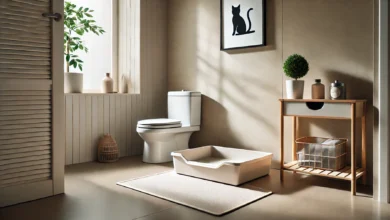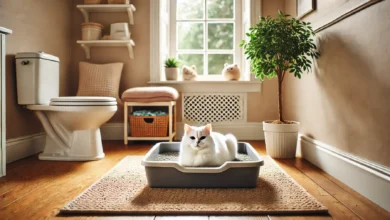How to Manage Travel Litter Box Needs for Cats
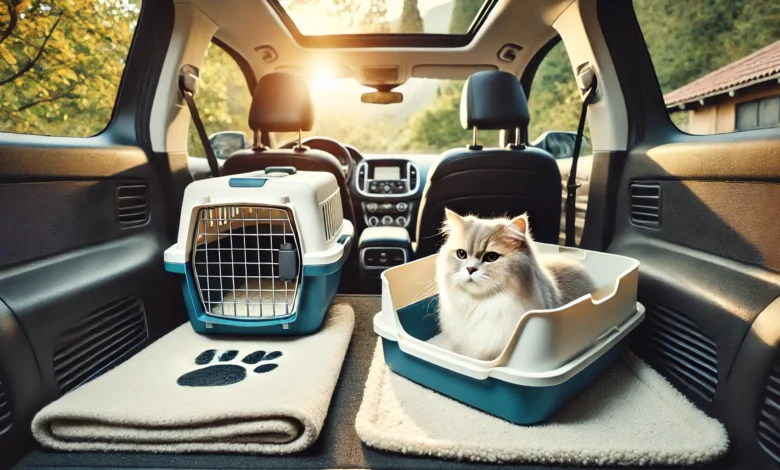
One of the most rewarding things that you can do in your life is to travel with your cat.
As a matter of fact, it can be very entertaining, but it has its own set of challenges that come along with the task of managing the travel litter needs of your cat on the go.
Cats are creatures of habit, and upsets in this routine—like using an unfamiliar travel litter box—can lead to stress or accidents.
Traveling with your cat requires access to a comfortable, hygienic travel litter box to maintain health and minimize anxiety.
This article will guide you through managing your cat’s travel litter box needs for a hassle-free journey.
Table of Contents
Choosing the Correct Travel Litter Box for Your Cat
Choose a travel litter box by considering your cat’s particular needs and your travel plans.
Not all travel litter boxes are alike, and selecting one that meets your pet’s needs will make all the difference in terms of comfort and convenience.
Let’s explore some key factors to consider when choosing the right travel litter box.
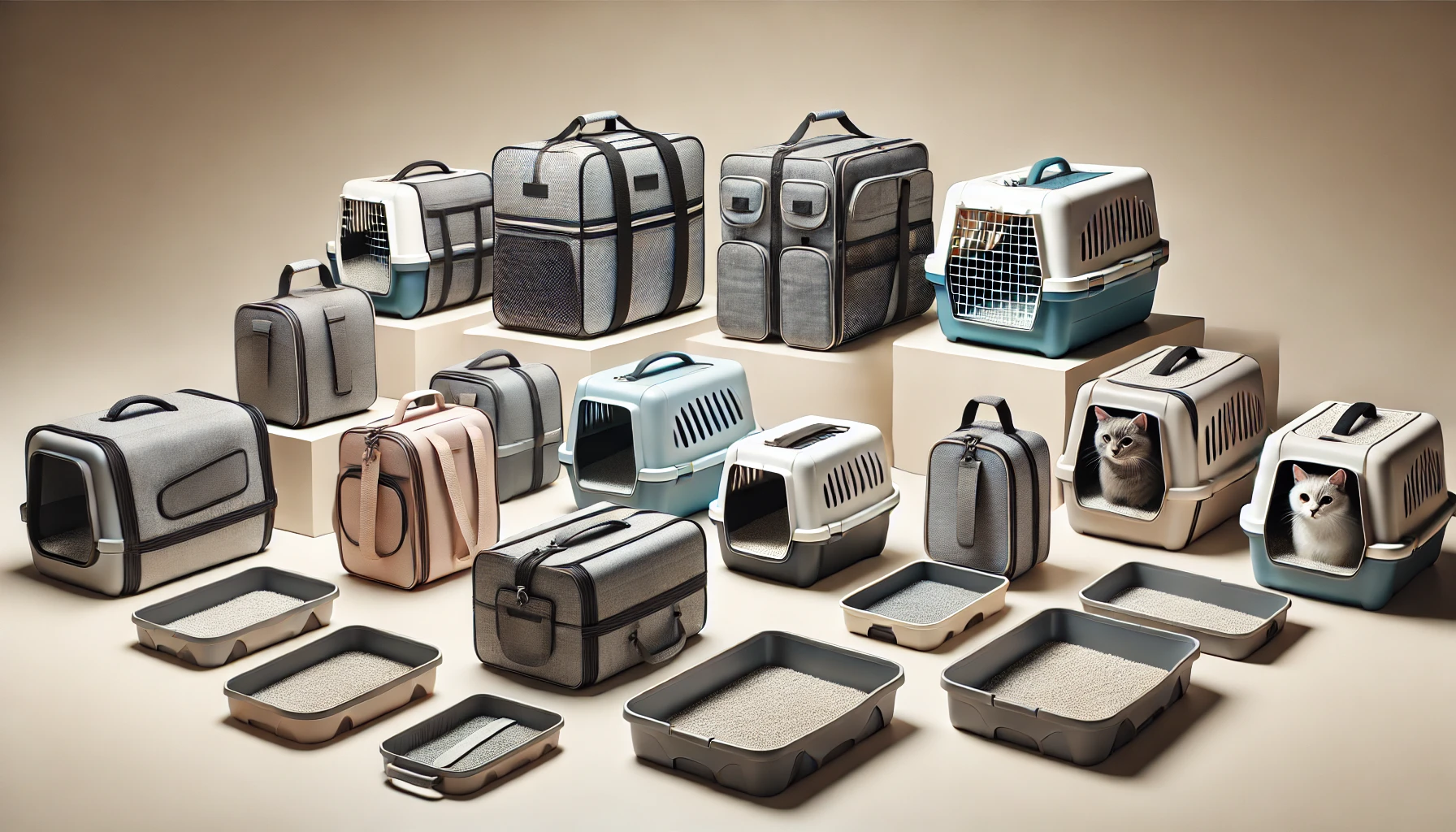
Factors to Consider When Choosing a Travel Litter Box
Your cat’s size, behavior, and preferences should play a major role in your choice.
A travel litter box that is too small may discourage your cat from using it, while one that is too large might be cumbersome for travel.
You should also consider the material of the litter box.
Look for durable, leak-proof designs that are easy to clean and can withstand the journey.
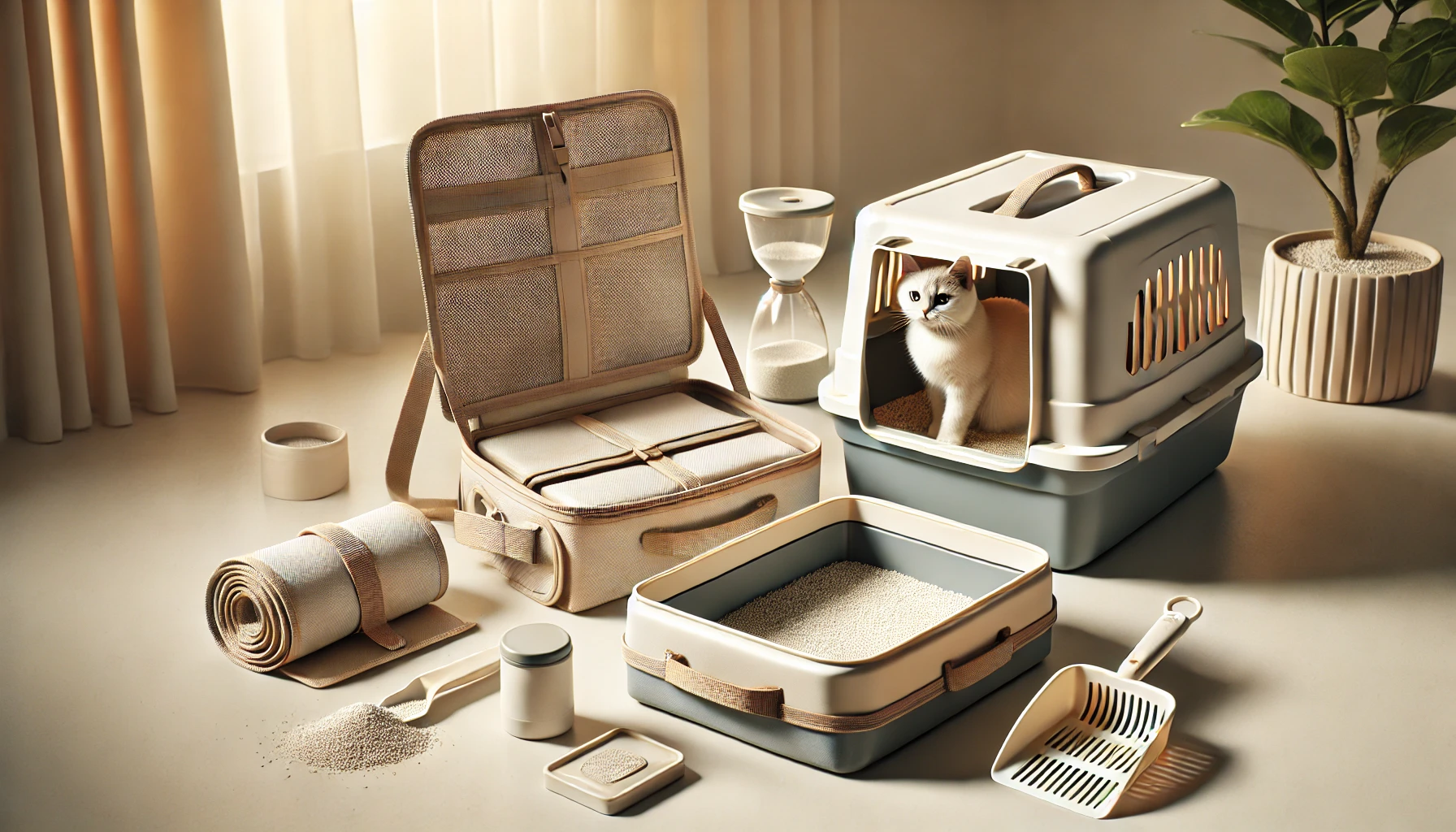
Best Kinds of Travel Litter Boxes for Convenience
The most convenient travel litter boxes are foldable, collapsible, and disposable.
These types are specifically designed to save space and simplify travel.
Foldable options are often made of waterproof material, making them reusable yet compact.
Disposable litter boxes, on the other hand, are hygienic, one-time-use options that are easy to dispose of after use.
Both minimize mess and make cleanup quick and easy.
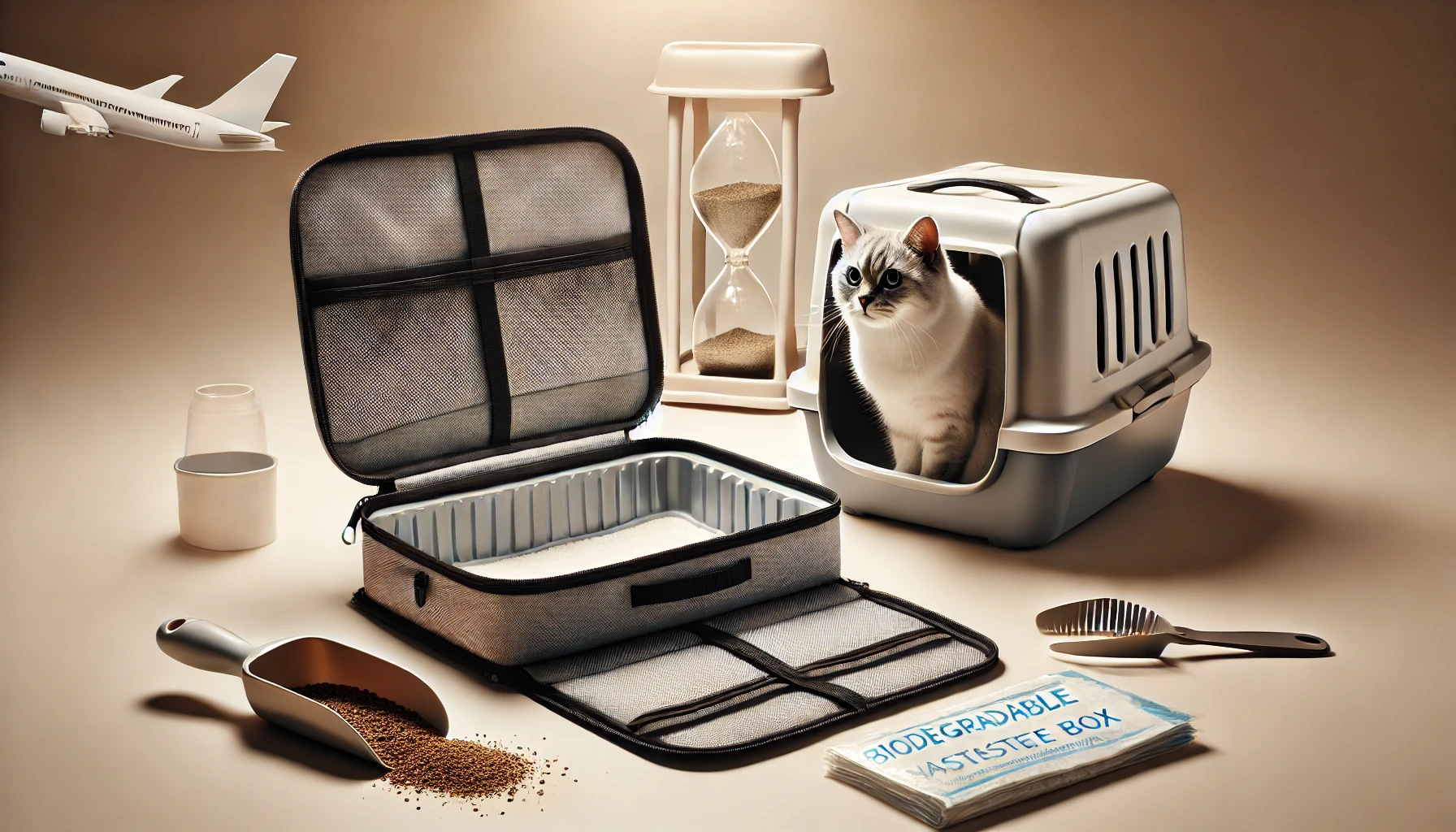
Foldable and Disposable Travel Litter Options
If you are traveling for an extended period, a foldable litter box is ideal.
It can be easily folded and packed away when not in use and quickly set up when needed.
These boxes often come with zippers or Velcro for easy assembly.
Disposable litter boxes are perfect for short trips or road journeys when you want to avoid the hassle of cleaning.
Most disposable options are made from biodegradable materials, making them an eco-friendly choice.
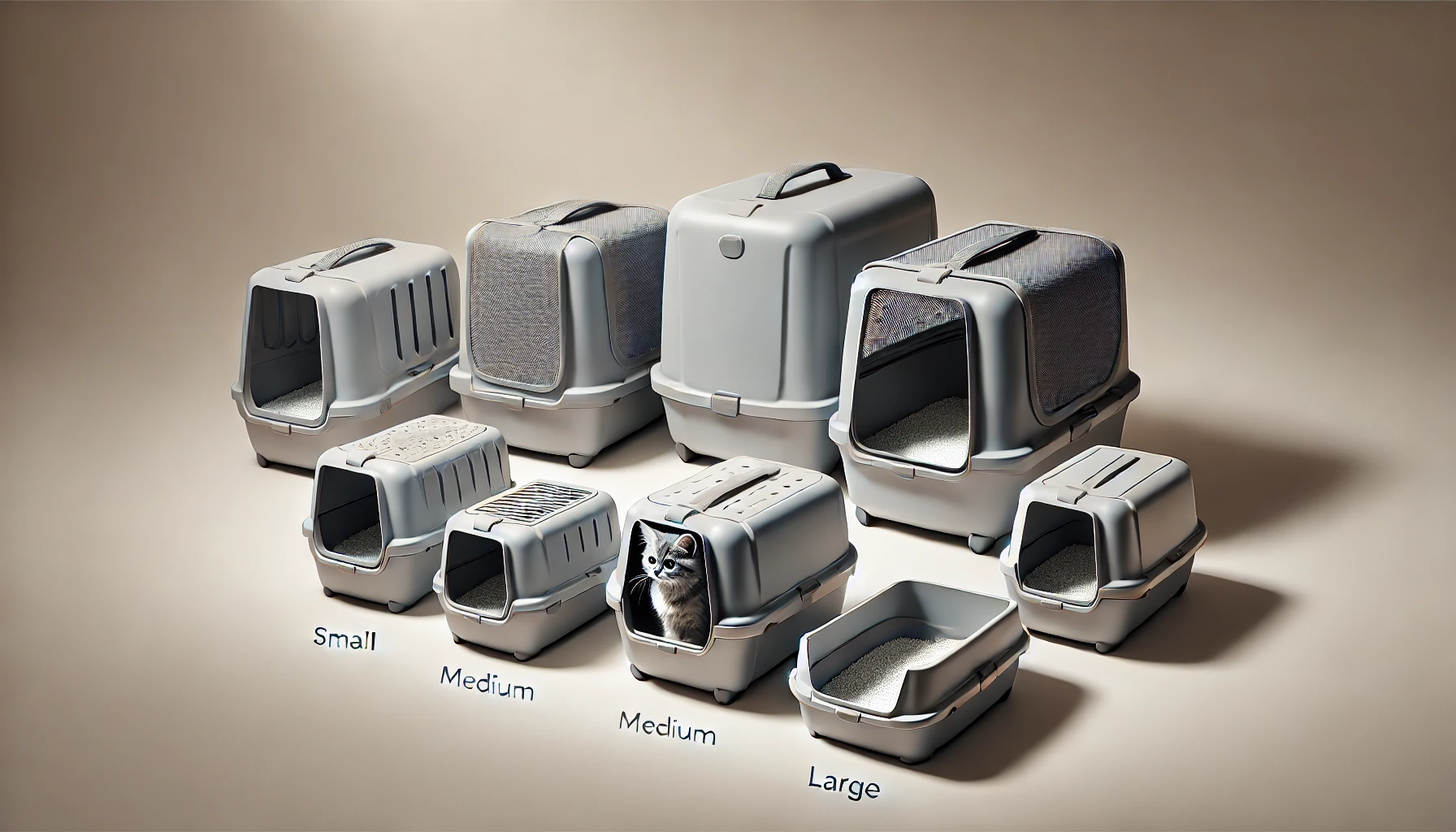
Portable Litter Boxes for Various Cat Sizes: A Comparison
Cats come in all shapes and sizes, and so do portable litter boxes.
For a small cat or kitten, a compact box might be sufficient.
Larger cats, however, may need more room to move around inside the box.
Be sure to check the dimensions of any travel litter box before purchasing to ensure it meets your cat’s comfort needs.
Some brands even offer size-specific options tailored to different breeds.
It’s crucial to consider your cat’s size and preferences when selecting a travel litter box. Ensuring your cat’s comfort will help reduce stress and make travel easier.
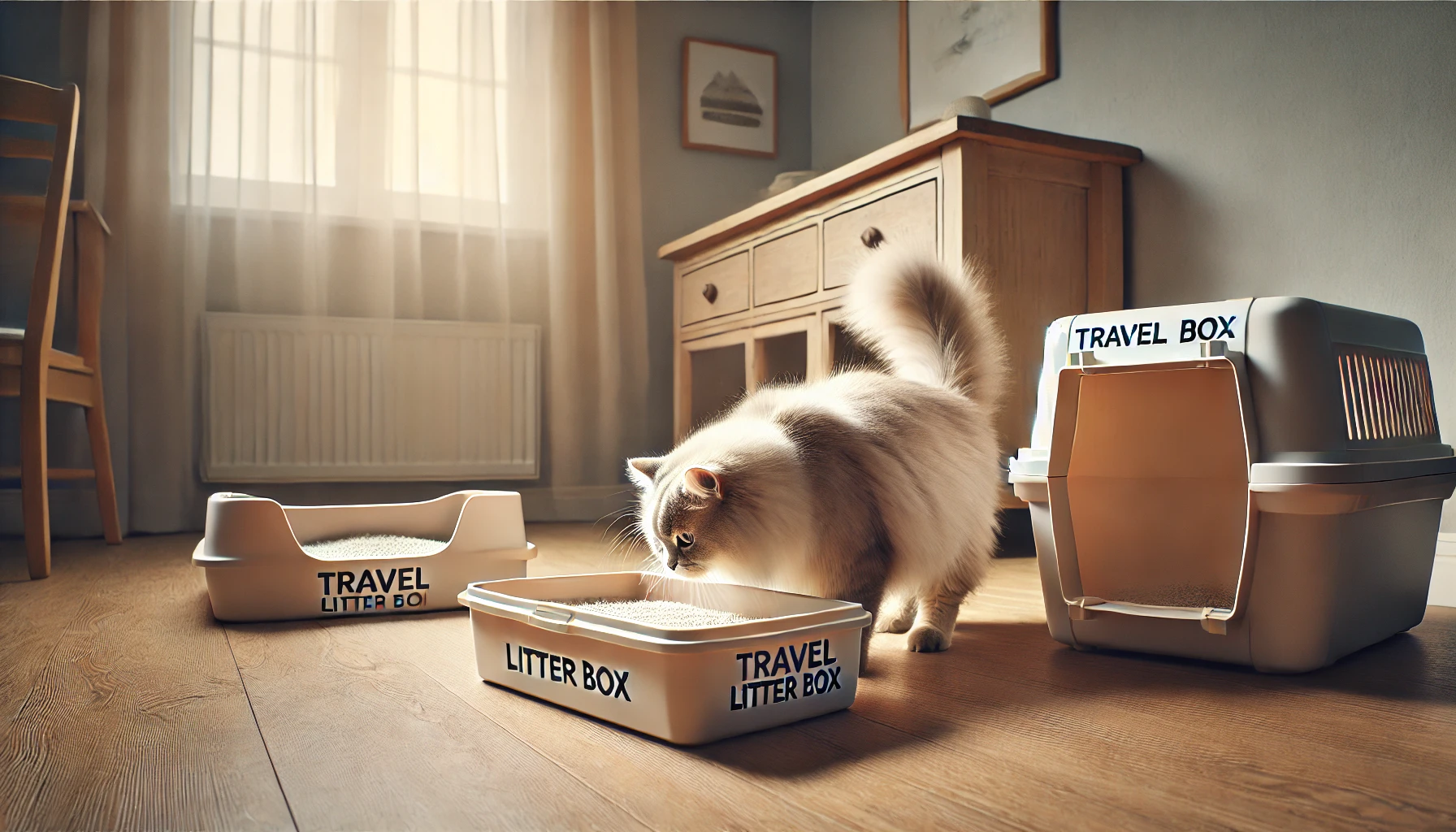
Preparing Your Cat for Travel Litter Box Use
Acclimating your cat to a travel litter box well in advance of your departure date is key.
Cats are usually very particular with their litter habits, and placing a new litter box in an unfamiliar environment may confuse or stress them out.
It’s important to get your cat accustomed to the travel litter box weeks before your trip to make the entire journey easier for both of you.
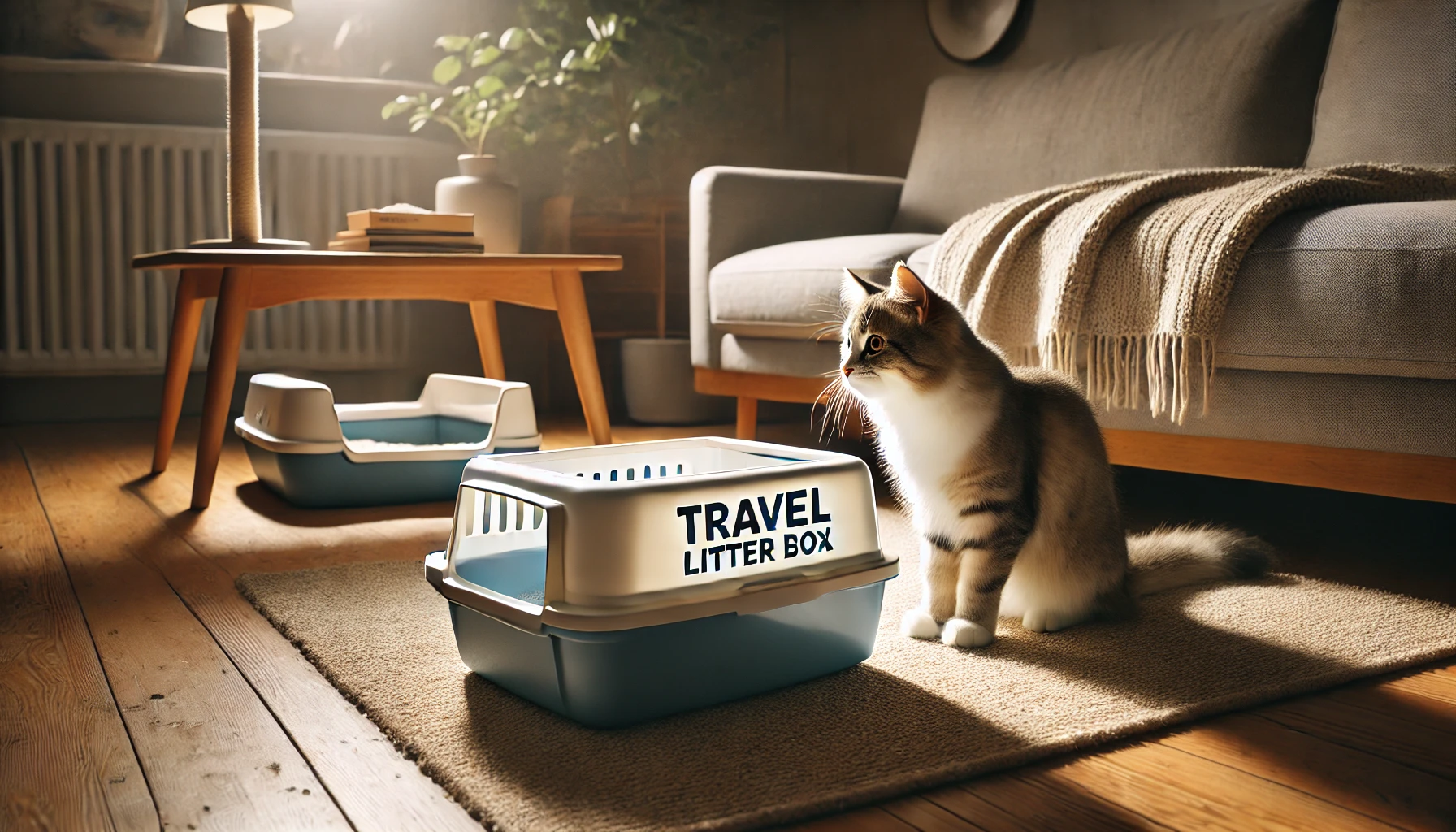
Introducing Your Cat to the Travel Litter Box
Start by introducing the travel litter box in your home.
Place it next to their regular litter box so your cat can get used to it.
You can also encourage your cat to explore it by sprinkling a small amount of their regular litter inside.
Over time, you can move the travel litter box to different areas of your house to simulate changes in location.
This will help your cat become acclimated to the new box in various environments.
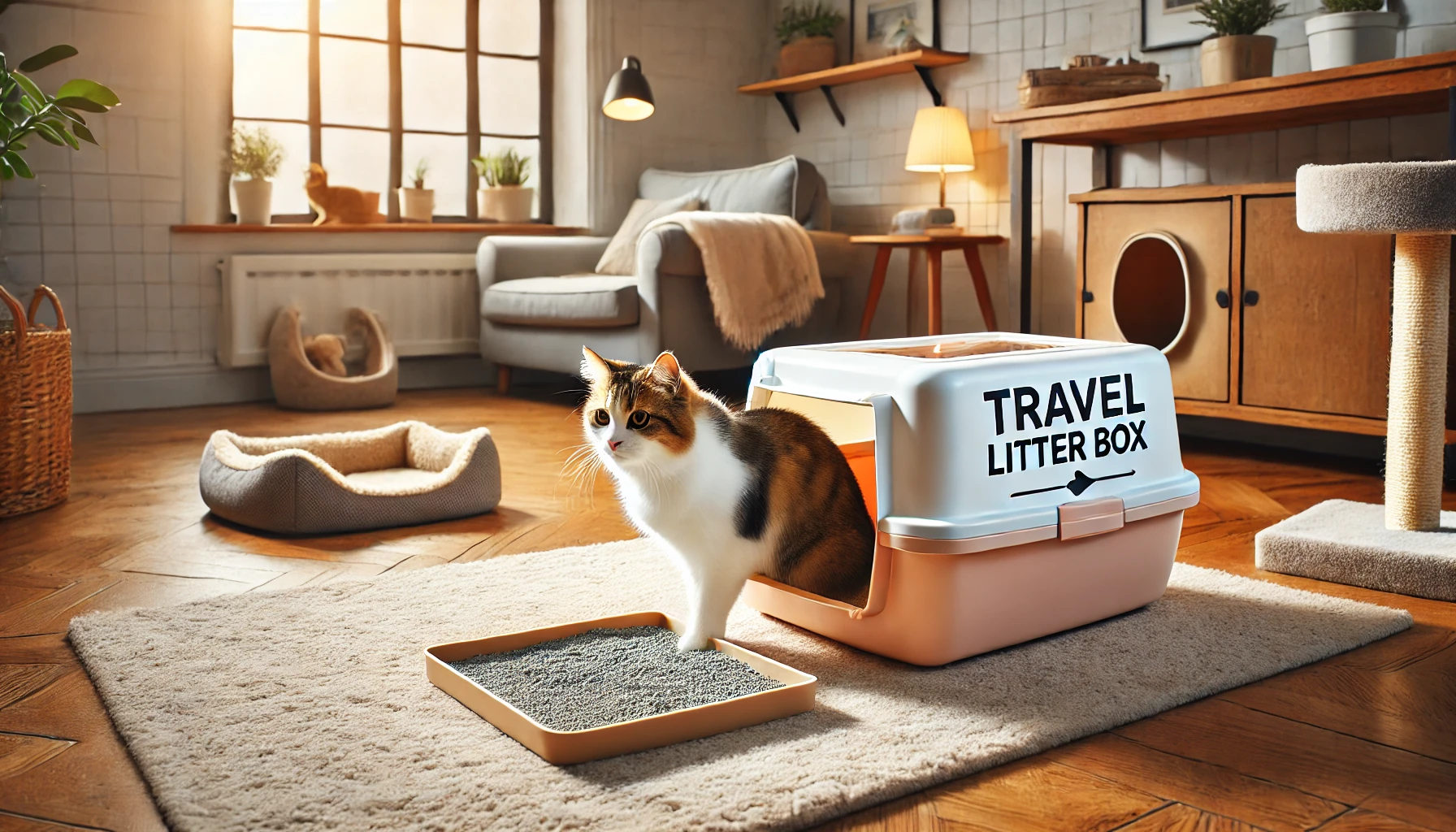
Training Your Cat for Seamless Transitions When Traveling
Making the transition to a travel litter box smoother during trips can be achieved with some familiar elements.
Here are a few steps to ensure the transition is seamless:
- Use the same kind of litter in the travel litter box that you normally use at home to maintain consistency.
- Give your cat opportunities to practice using the travel litter box at home for short periods, especially before going on short drives or walks.
- Allow your cat some time to get comfortable in the new environment before expecting them to use the travel litter box during the trip.
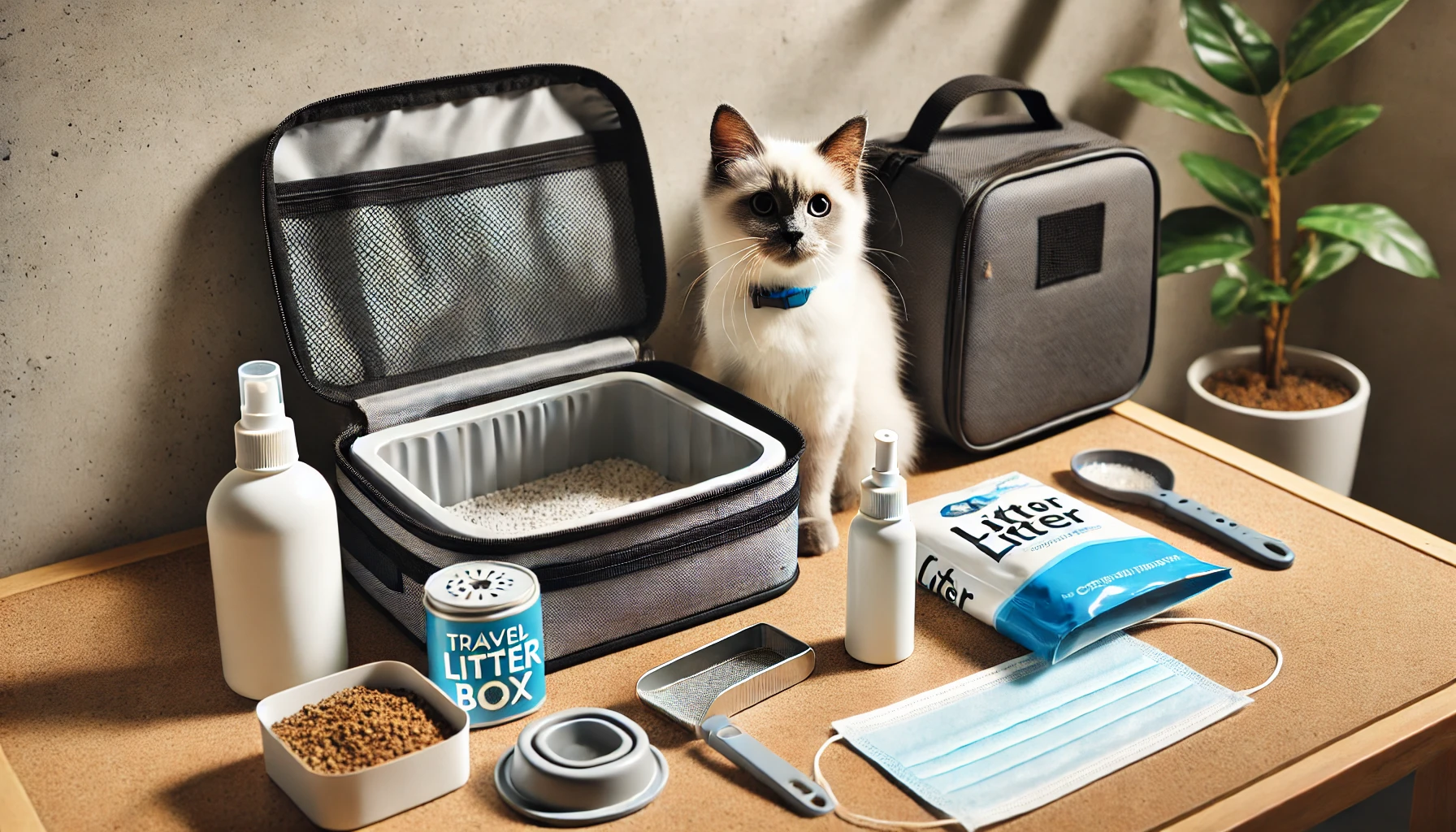
Packing Essentials: What to Bring Along for Cat Litter Needs
Be sure to pack all the necessary items for your cat’s litter needs during travel.
In addition to the travel litter box, here are some essential items to bring along:
- Extra litter, especially for long trips, as the specific brand your cat uses may not be available while traveling.
- A litter scoop for quick and easy cleaning.
- Waste disposal bags for handling used litter while on the go.
- Odor-neutralizing sprays or wipes to keep the area around the litter box fresh and clean.
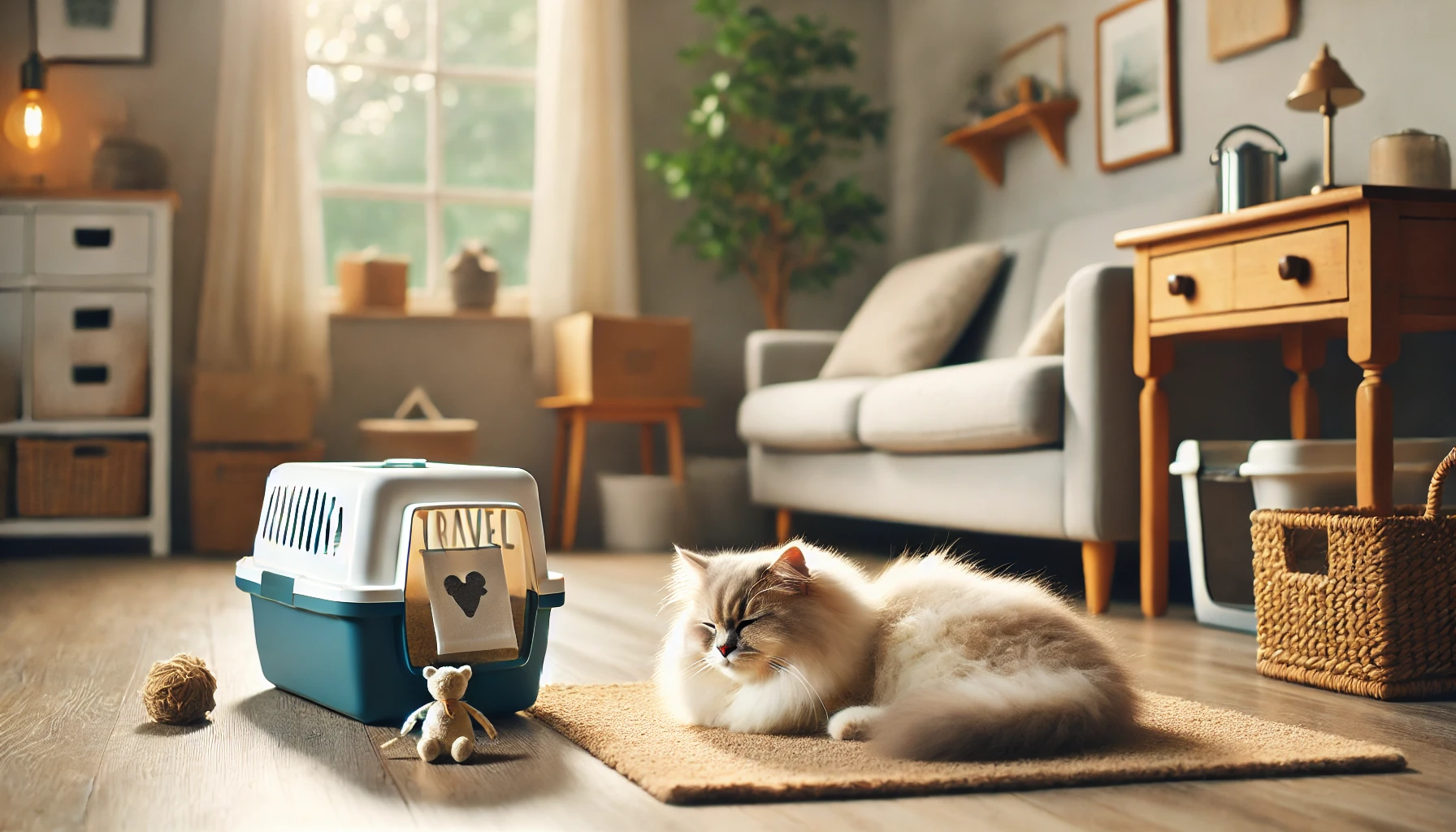
Making the Travel Litter Box Familiar: Ensuring Comfort
Place a small piece of bedding or an item with your cat’s scent near the travel litter box to help them feel more comfortable.
Cats rely heavily on their sense of smell, and familiar scents can significantly reduce anxiety during travel.
Additionally, keep the travel litter box in a quiet and accessible area during transport to prevent your cat from feeling stressed or avoiding its use.
Acclimating your cat to a travel litter box before your trip can minimize anxiety and confusion, leading to a more comfortable travel experience for both of you.
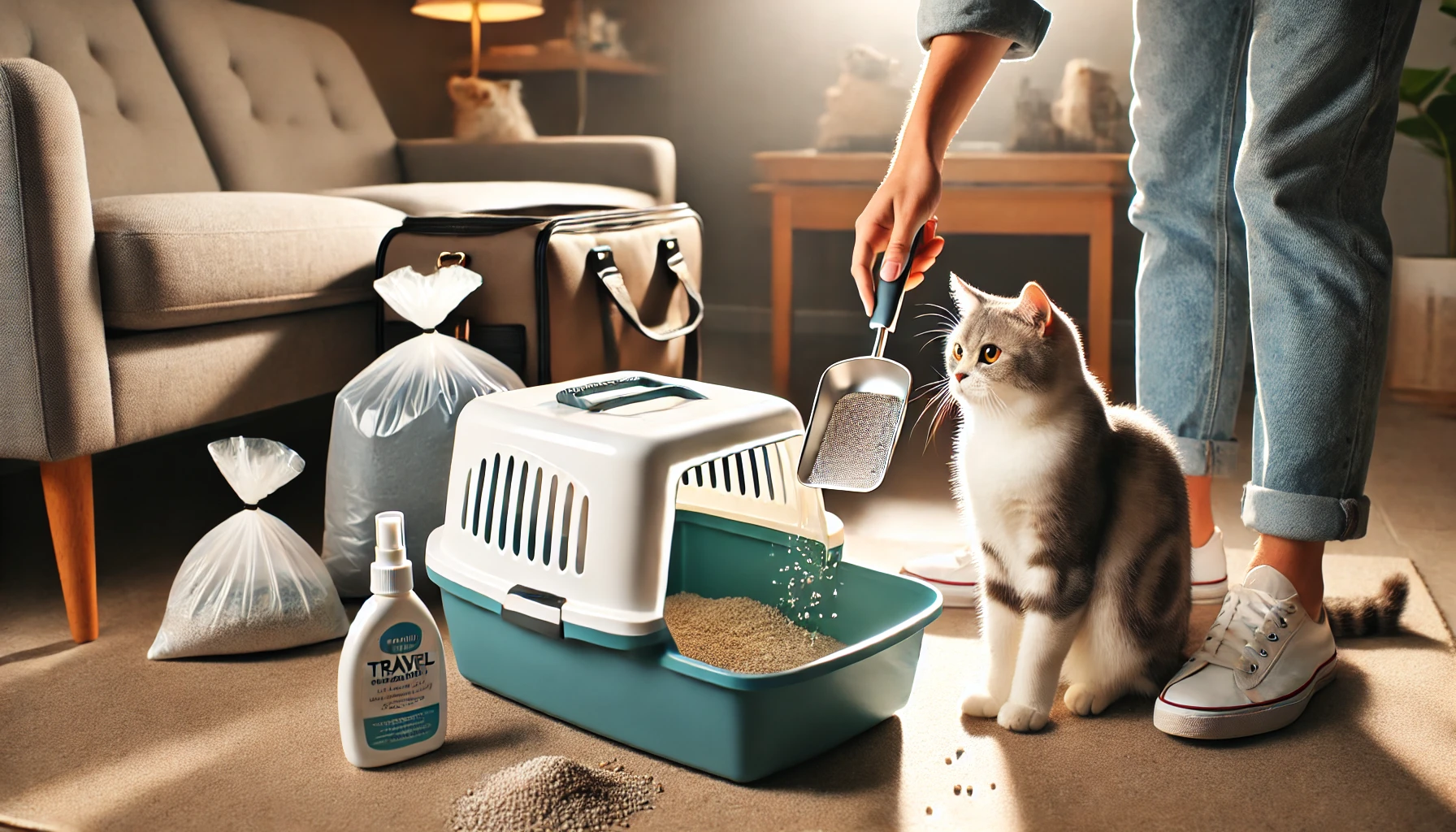
Managing Litter Box Hygiene During Travel
Keeping your cat’s travel litter box hygienic is in their best interest for comfort and health while on the road.
Cleaning the litter box during a trip can be a bit of a task, but with the right equipment and attitude, it’s manageable.
Cats are sensitive to smells and may refuse to use a dirty travel litter box, which can increase their stress.
Regular cleaning and litter replacement can help minimize this stress and keep your journey smooth.
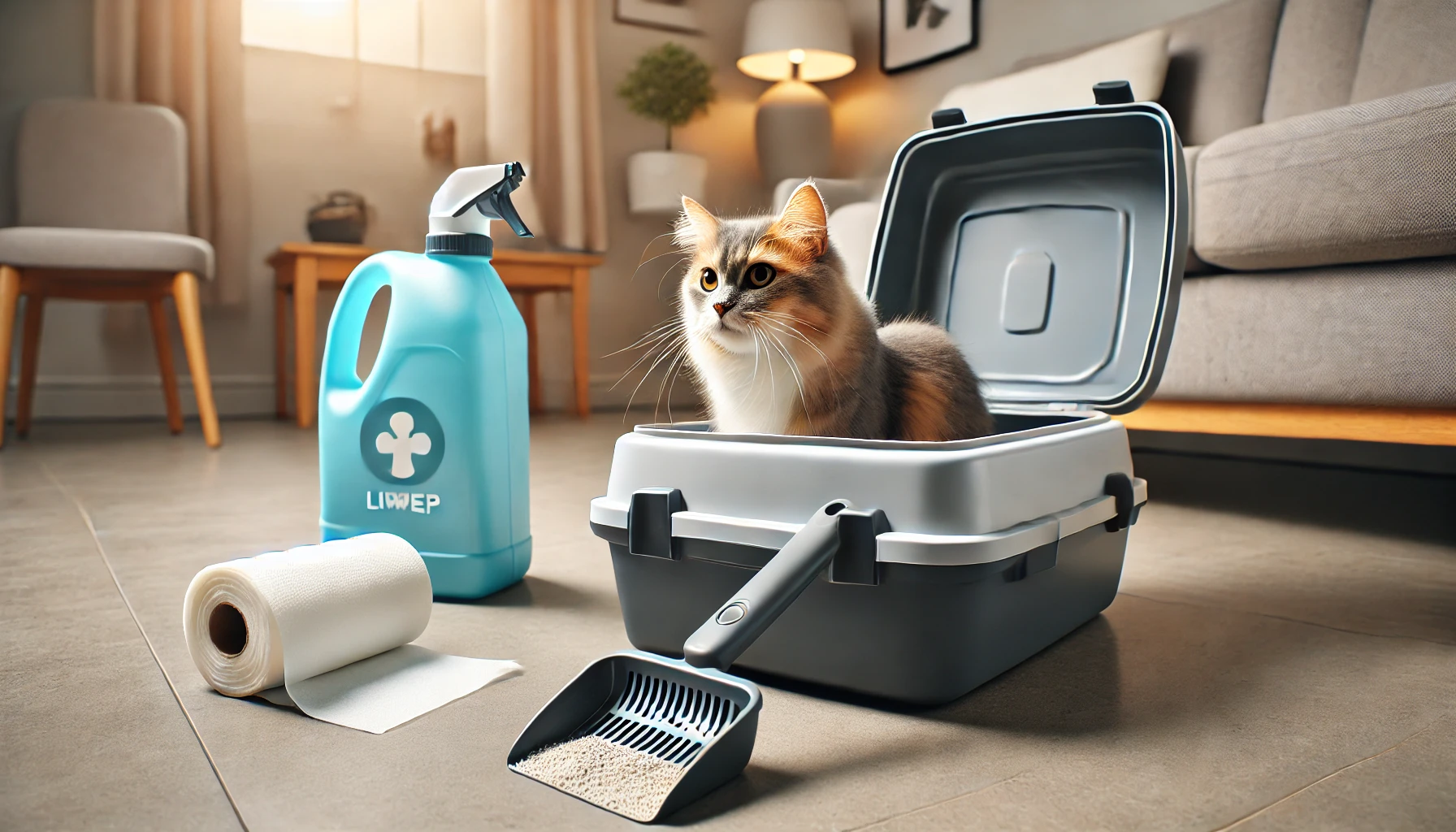
How to Keep the Travel Litter Box Clean
To maintain hygiene for your cat’s travel litter box, regular cleaning is necessary.
Here are a few tips to make this task easier:
- Clean the litter box at least once per day, even on short trips. Cats prefer a clean environment, and dirty litter will discourage them from using the box.
- Using disposable liners in the travel litter box simplifies cleaning. The liners can be easily replaced after each use, reducing the need to clean the entire box frequently.
- Consider using a portable litter scoop to quickly remove waste. This helps prevent odor buildup and keeps the travel litter box cleaner without needing to replace all the litter after each use.
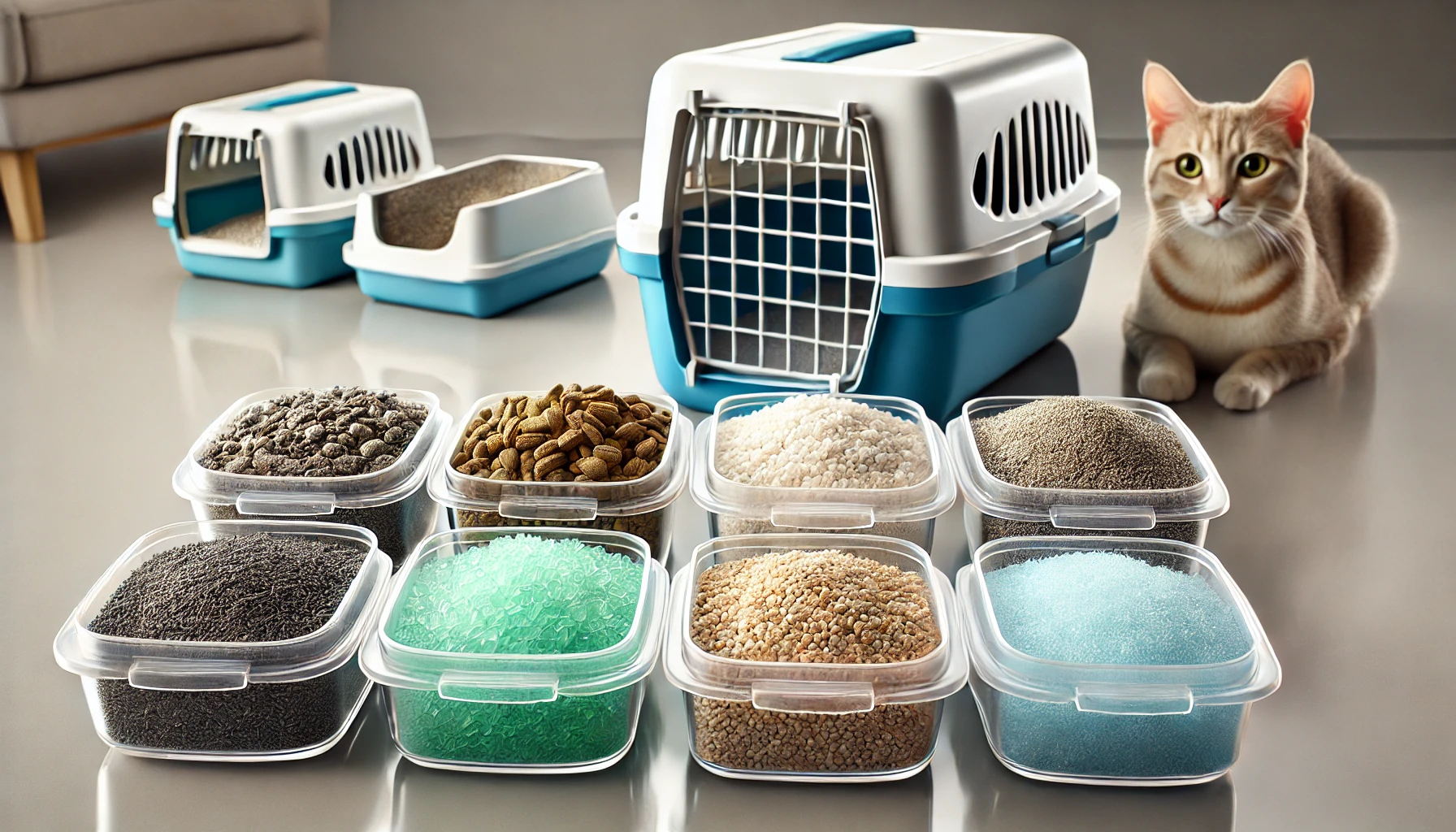
Choosing the Right Cat Litter for Travel
The type of litter you choose for travel can make a significant difference in maintaining hygiene.
You’ll want to select a lightweight, dust-free litter that controls odor effectively.
Here are some types of litter that are ideal for travel:
- Clumping litter: This type of litter forms clumps around waste, making it easy to scoop. It also provides good odor control.
- Silica gel litter: Known for its super absorbency and excellent odor control, silica gel litter is lightweight and can be used for longer trips.
- Biodegradable litter: If you’re eco-conscious, biodegradable litter options, such as wood or corn-based litters, are great for travel. They’re also easy to dispose of during the trip.
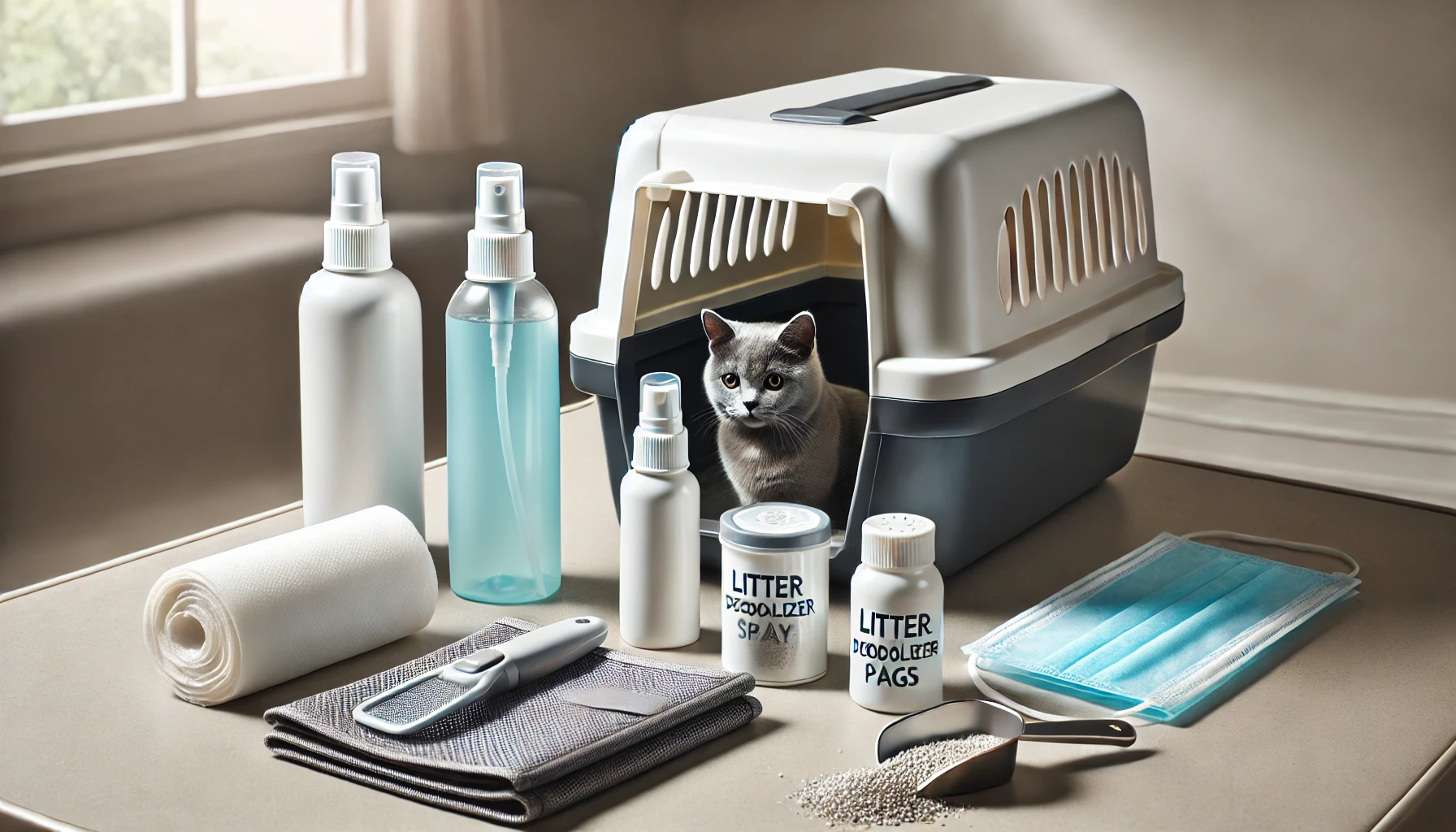
How to Handle Odors in a Travel Litter Box
Odor control can be one of the biggest challenges when traveling with a cat.
Here are some strategies to keep odors at bay:
- Use odor-neutralizing sprays or litter deodorizers to eliminate unpleasant smells without harming your cat.
- Frequent cleaning is essential. Regular waste removal helps prevent odors from becoming overwhelming.
- Ensure the travel litter box is well-ventilated, especially on longer trips. A breathable container helps minimize trapped odors.
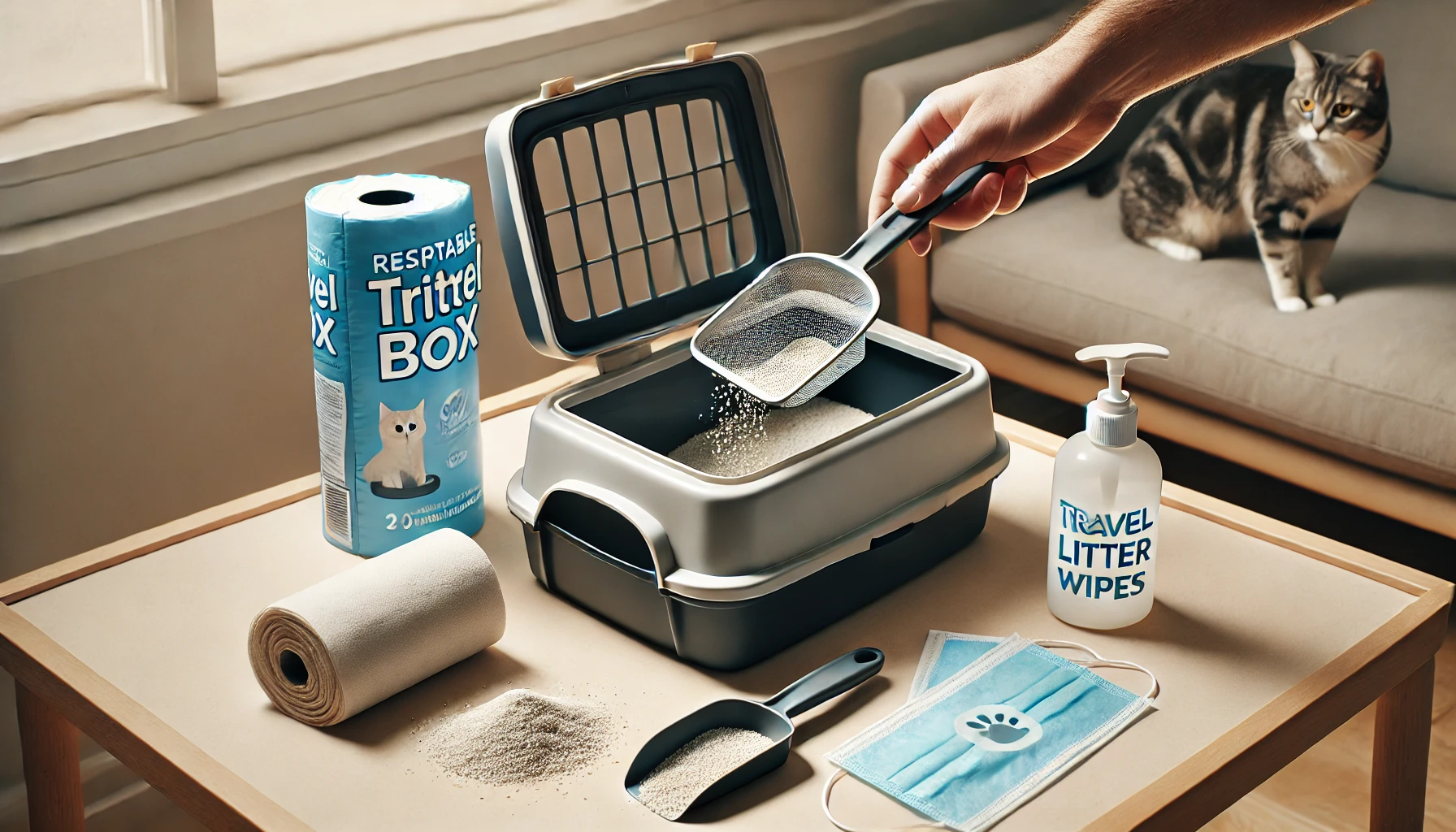
Quick Cleaning Tips for On-the-Go Litter Maintenance
Cleaning your cat’s travel litter box on the go doesn’t need to be a chore.
Here are a few quick tips to simplify the process:
- Pack a small portable litter scoop and waste bags to make waste removal easy and hassle-free.
- Use a litter box liner that can be easily removed and replaced, simplifying the cleaning process during travel.
- Keep a stash of disposable wipes on hand to quickly clean up spills or messes.
- Store extra litter in resealable bags for easy refills without having to carry a full container.
Maintaining hygiene is essential for your cat’s health and comfort during travel. Regular cleaning of the litter box helps avoid unpleasant odors and ensures your cat continues to use the box.
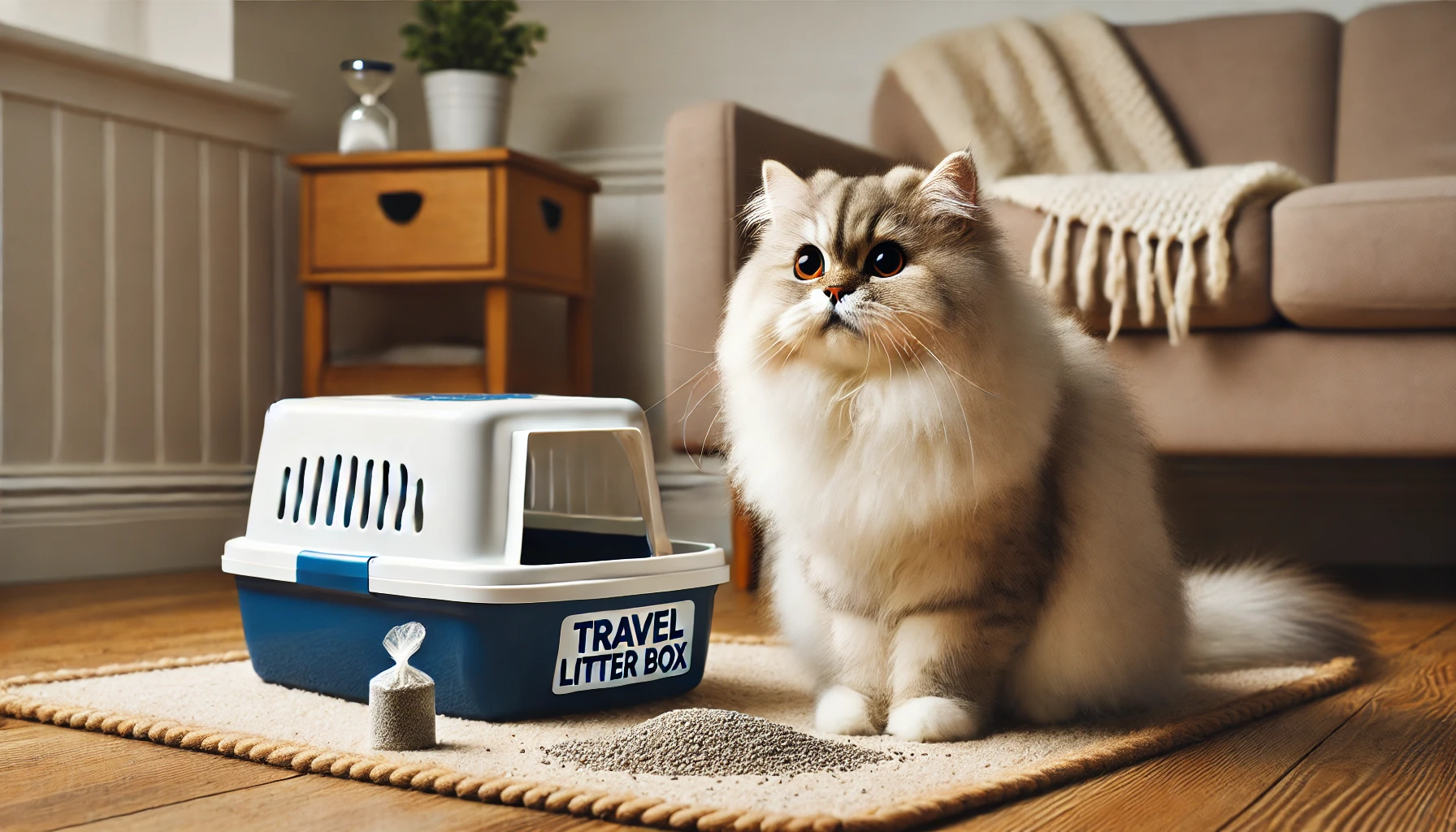
Addressing Common Issues with Travel Litter Boxes
Traveling with your cat can sometimes be unpredictable, and some issues with travel litter boxes may arise.
From your cat refusing to use the box to managing accidents, it’s important to be prepared for these possibilities.
Knowing how to address these common problems will make your journey—and your cat’s—much easier and less stressful.
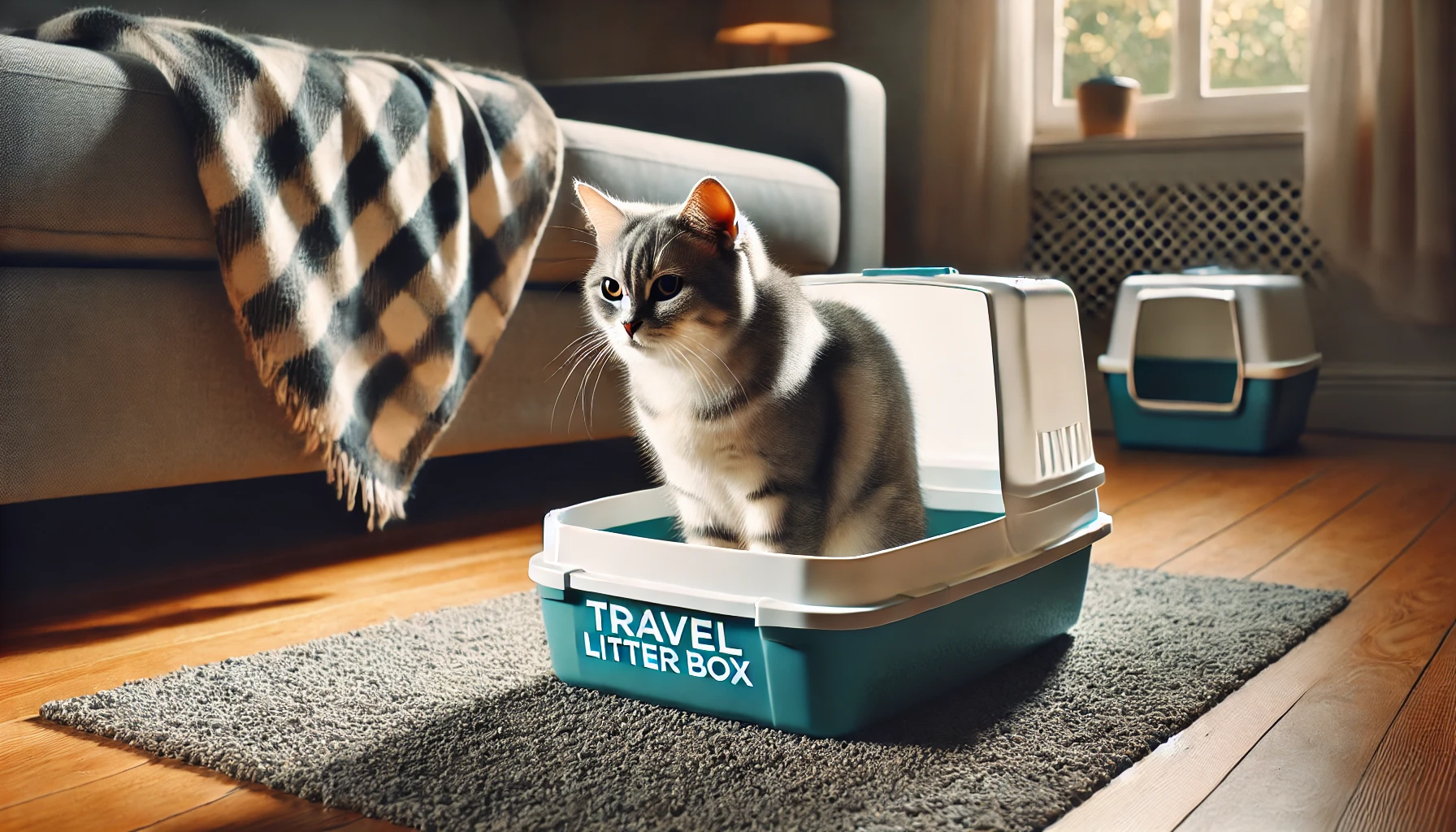
What to Do If Your Cat Refuses to Use the Travel Litter Box
It’s not uncommon for a cat to refuse to use an unfamiliar travel litter box.
Cats can be quite particular about their litter habits, and any change in their routine may cause them to avoid using the box.
Here are a few ways to encourage your cat to use the travel litter box:
- Keep Familiarity: Use the same type of litter your cat is accustomed to at home. The smell and texture will be familiar and help reduce your cat’s anxiety.
- Location Matters: Place the litter box in a quiet, private area where your cat feels safe. Avoid noisy or high-traffic areas, as they may make your cat uncomfortable.
- Positive Reinforcement: Reward your cat with treats or praise when they use the travel litter box. This positive reinforcement can help them adjust more quickly.
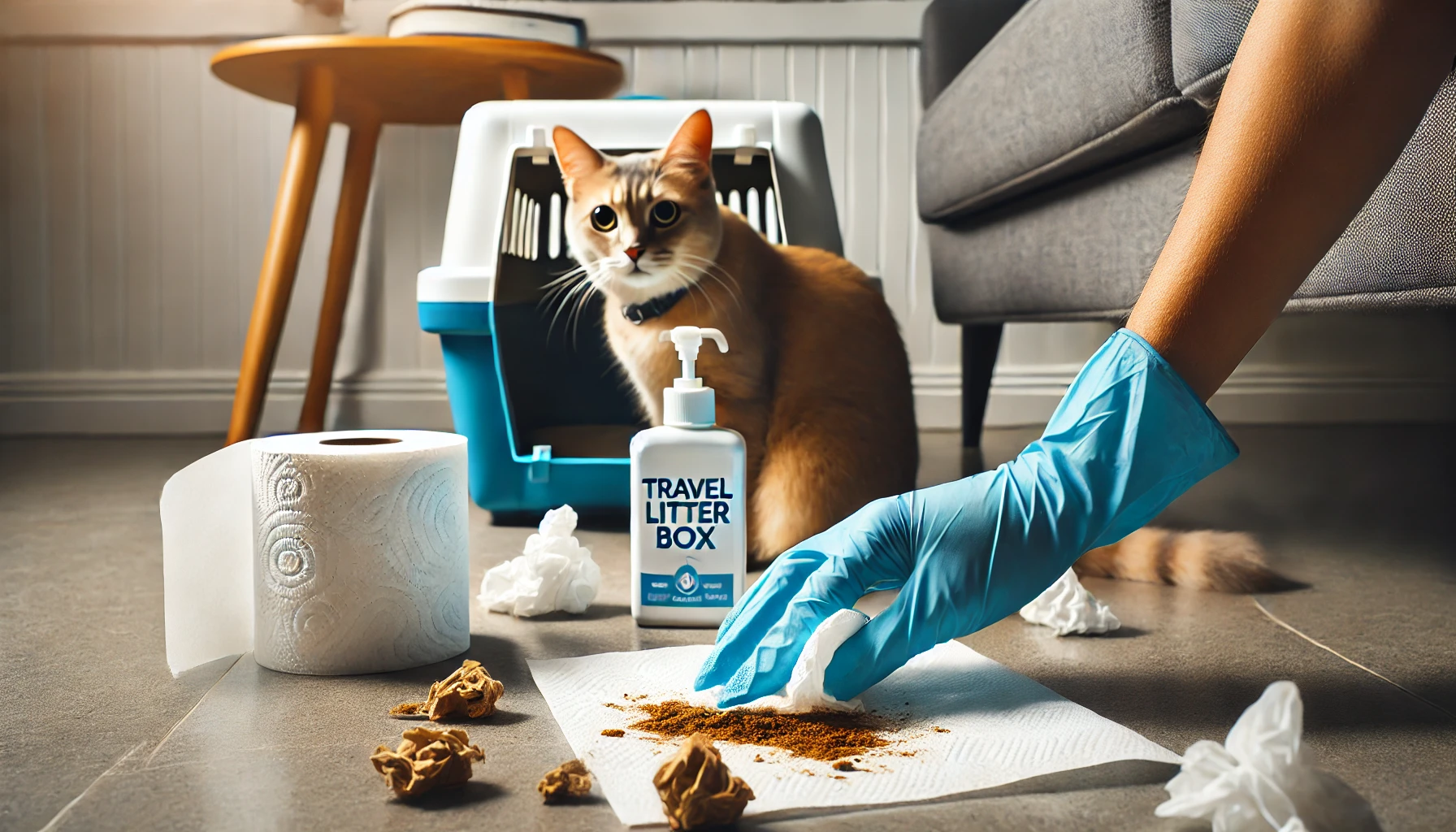
Handling Accidents: Emergency Tips for Messy Situations
Accidents can—and do—happen, especially when your cat is out of their comfort zone.
Here are some emergency tips for managing messy situations efficiently:
- Be Prepared: Carry wipes, paper towels, and odor-neutralizing sprays to clean up accidents quickly. The faster you clean, the easier it will be to manage.
- Puppy Pads: Place puppy pads in the carrier or around the travel litter box to catch any messes if your cat has an accident outside the box. They make cleanup much easier.
- Stay Calm: Cats are sensitive to stress, so if an accident happens, remain calm and clean up the mess without scolding your cat. This will help maintain a positive atmosphere for both of you.

Troubleshooting Discomfort or Anxiety in Cats
Cats can experience discomfort or anxiety during travel, which can affect their litter box habits.
Here are some ways to ease their stress:
- Feliway Spray: Use a calming pheromone spray like Feliway to help reduce your cat’s anxiety. Spray it around the travel litter box and in the car to create a soothing environment.
- Comfort Items: Place a familiar blanket or toy in the carrier or near the litter box. The familiar scent and presence of these items can help reduce anxiety.
- Frequent Breaks: If you’re traveling by car, take regular breaks to give your cat time to use the litter box and stretch their legs. This can help minimize stress during longer trips.
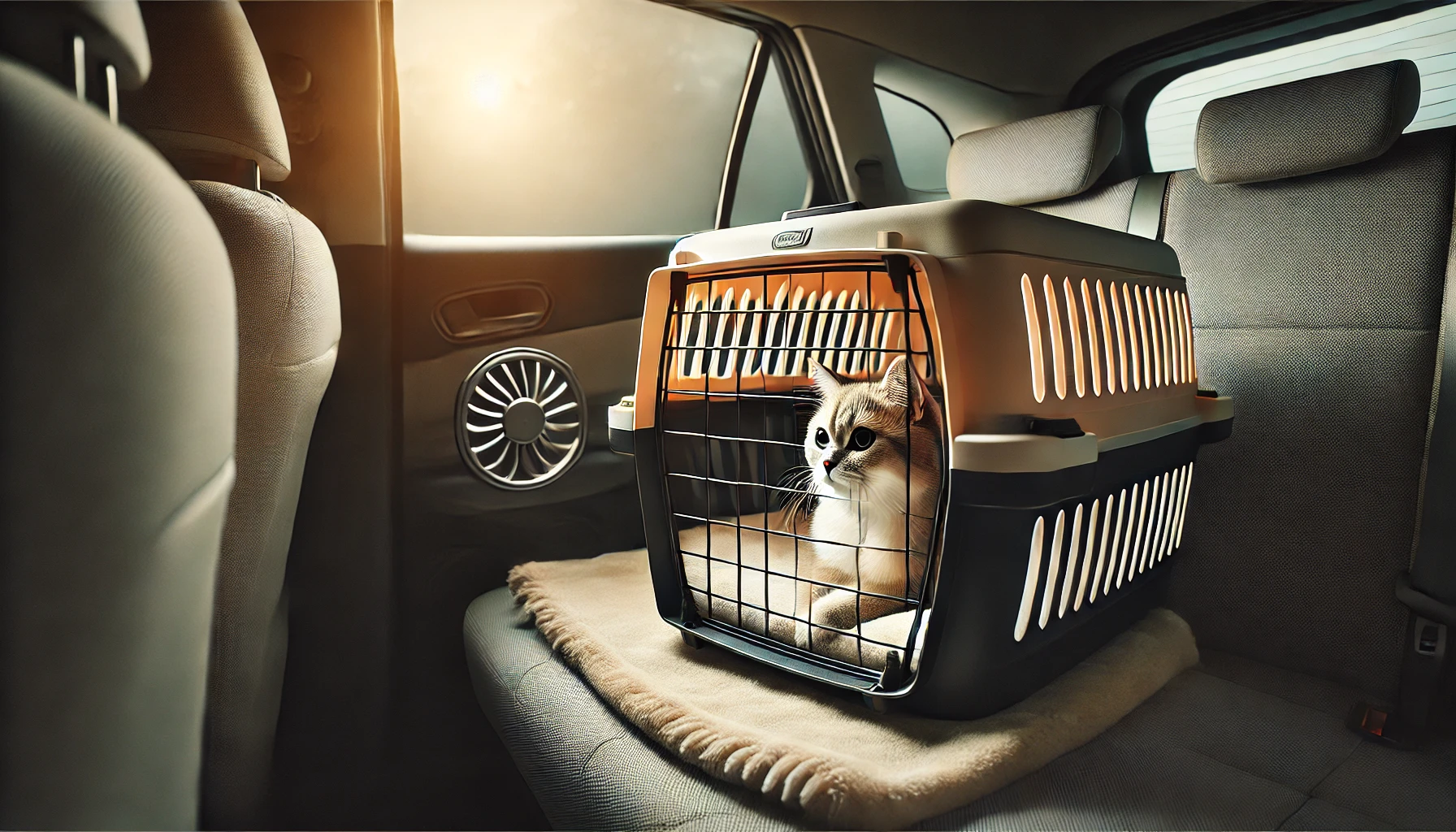
Ensuring Proper Ventilation for Longer Trips
Proper ventilation is crucial when traveling with your cat, especially on longer trips.
Poor ventilation can lead to discomfort and stress for your cat, as well as the buildup of odors.
Here’s how to ensure your cat has a comfortable environment:
- Choose a Well-Ventilated Carrier: Select a travel carrier with good ventilation to allow airflow and prevent odors from accumulating inside.
- Opening Windows Occasionally: If you’re traveling by car, open the windows slightly or use the car’s ventilation system to provide fresh air. Make sure the car is not too hot or too cold for your cat.
- Watch the Litter Box: Regularly check the litter box for odors or signs of discomfort in your cat. Good air circulation and ventilation will keep your cat comfortable and prevent litter box avoidance.
Traveling with your cat may bring unexpected challenges, such as litter box avoidance or accidents. Being prepared can make handling these issues easier and keep your journey stress-free.
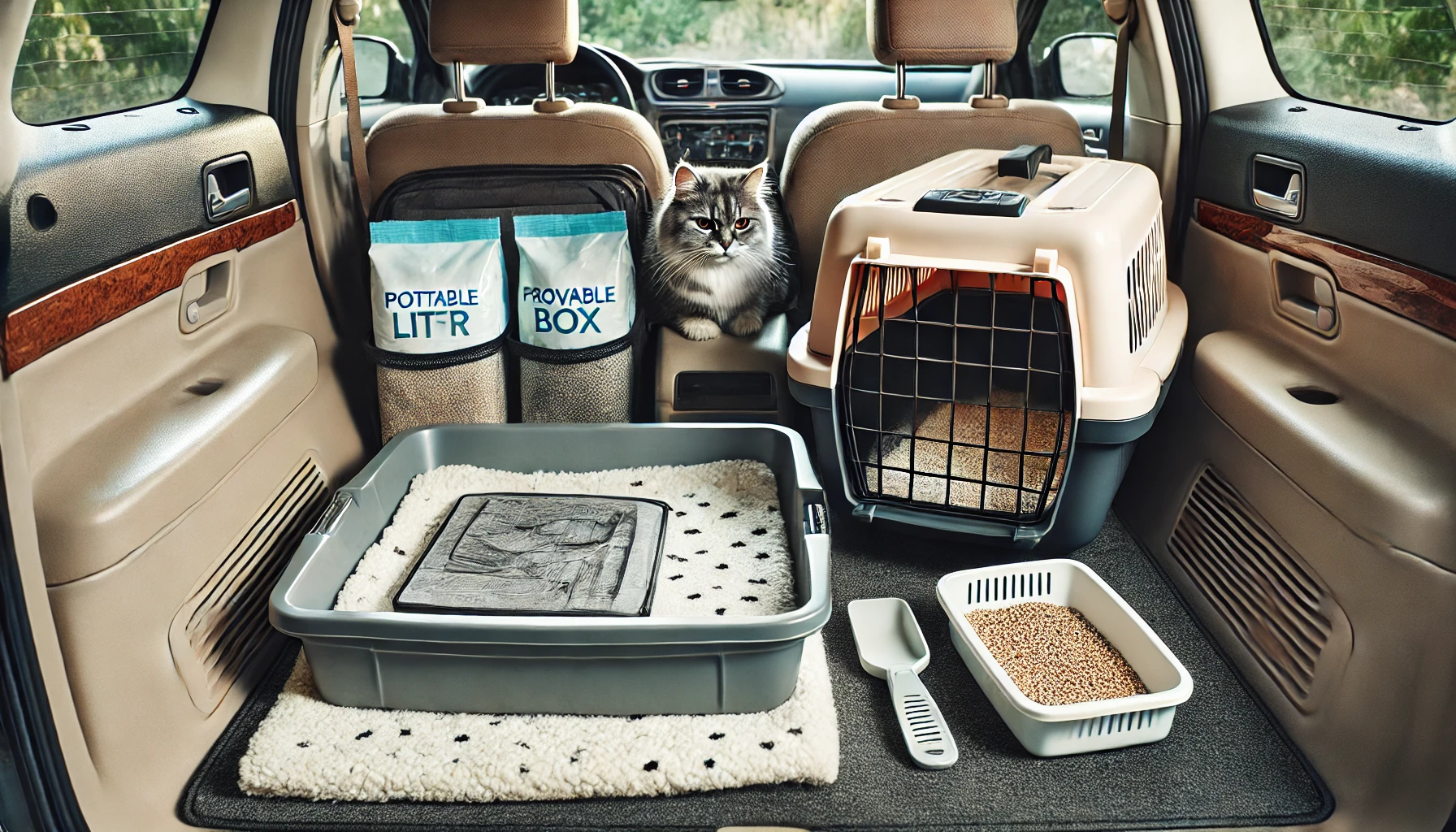
Tips for Long-Distance Travel with Cats and Their Litter Box
Long-distance travel with your cat involves unique challenges, especially when you need to manage their travel litter box needs.
Whether you’re on a road trip, flying, or traveling by train, it’s essential to have a clean and comfortable litter box available for your cat throughout the journey.
Here are some key tips for stress-free long-distance travel with your cat and their litter box.
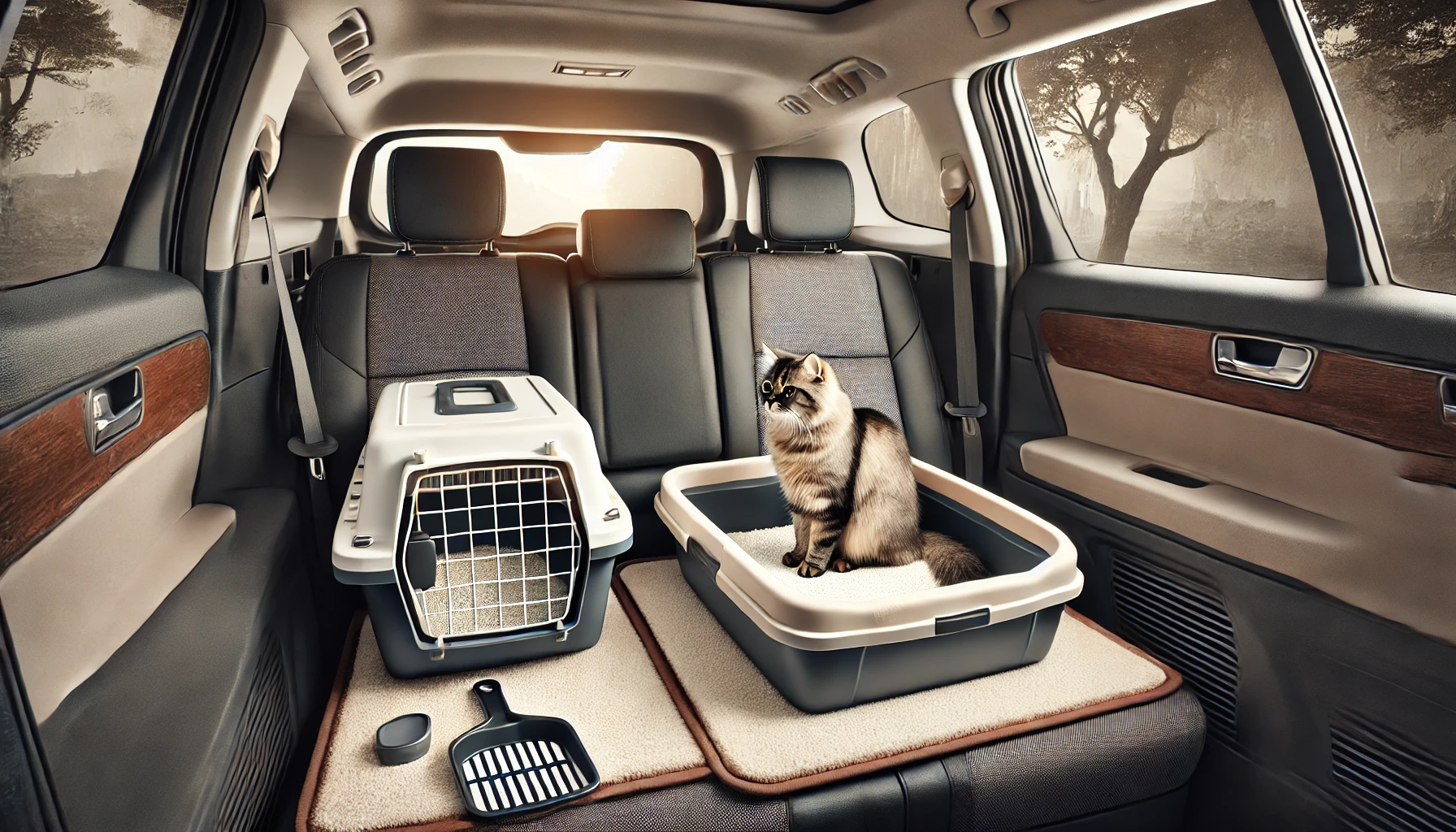
How to Set Up a Comfortable Litter Area for Road Journeys
When traveling by car, it’s crucial to set up a comfortable and accessible litter area for your cat, especially for longer road trips.
The following tips will help you create a no-stress environment:
- Secure the Litter Box: Place the travel litter box in a stable location where it won’t shift around. The back seat or floor of the car is ideal, as long as your cat can easily access it when needed.
- Frequent Stops: On longer drives, stop every couple of hours to give your cat the opportunity to use the litter box and stretch. Cats typically dislike using the litter box while the car is moving, and the break will allow them to relax and go.
- Keep the Area Clean: Use breaks to clean the litter box and keep it fresh. Pack extra supplies such as disposable wipes, extra litter, and waste bags to maintain litter box hygiene on the road.
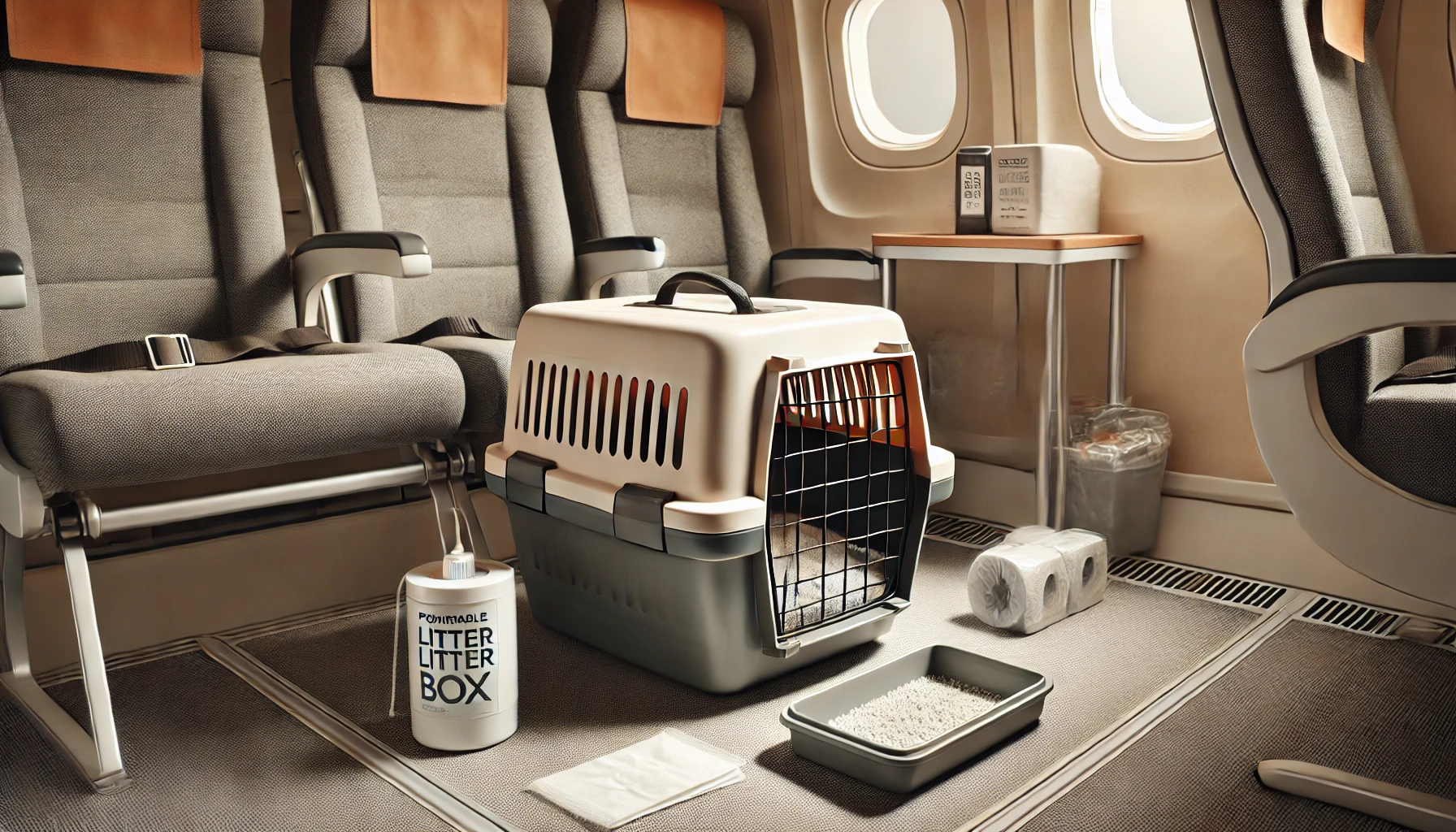
How to Manage Cat Litter Needs When Traveling by Airplane and Train
Managing your cat’s litter box needs during airplane or train travel requires additional considerations.
Different transportation methods come with unique challenges, and most airlines and trains have specific rules regarding pets:
- Check Airline/Train Policies: Confirm the pet policies of your airline or train company before traveling, especially regarding litter boxes and in-cabin pet travel. Some may require that pets remain in their carriers, limiting access to the litter box.
- Portable Solutions: Use disposable litter boxes or small portable litter pans for airplane or train travel. These are easy to set up and dispose of, making them suitable for confined spaces.
- Plan for Bathroom Breaks: Encourage your cat to use the litter box before boarding and during layovers or long stops. If this is not possible, be prepared with puppy pads or absorbent liners in case of accidents.
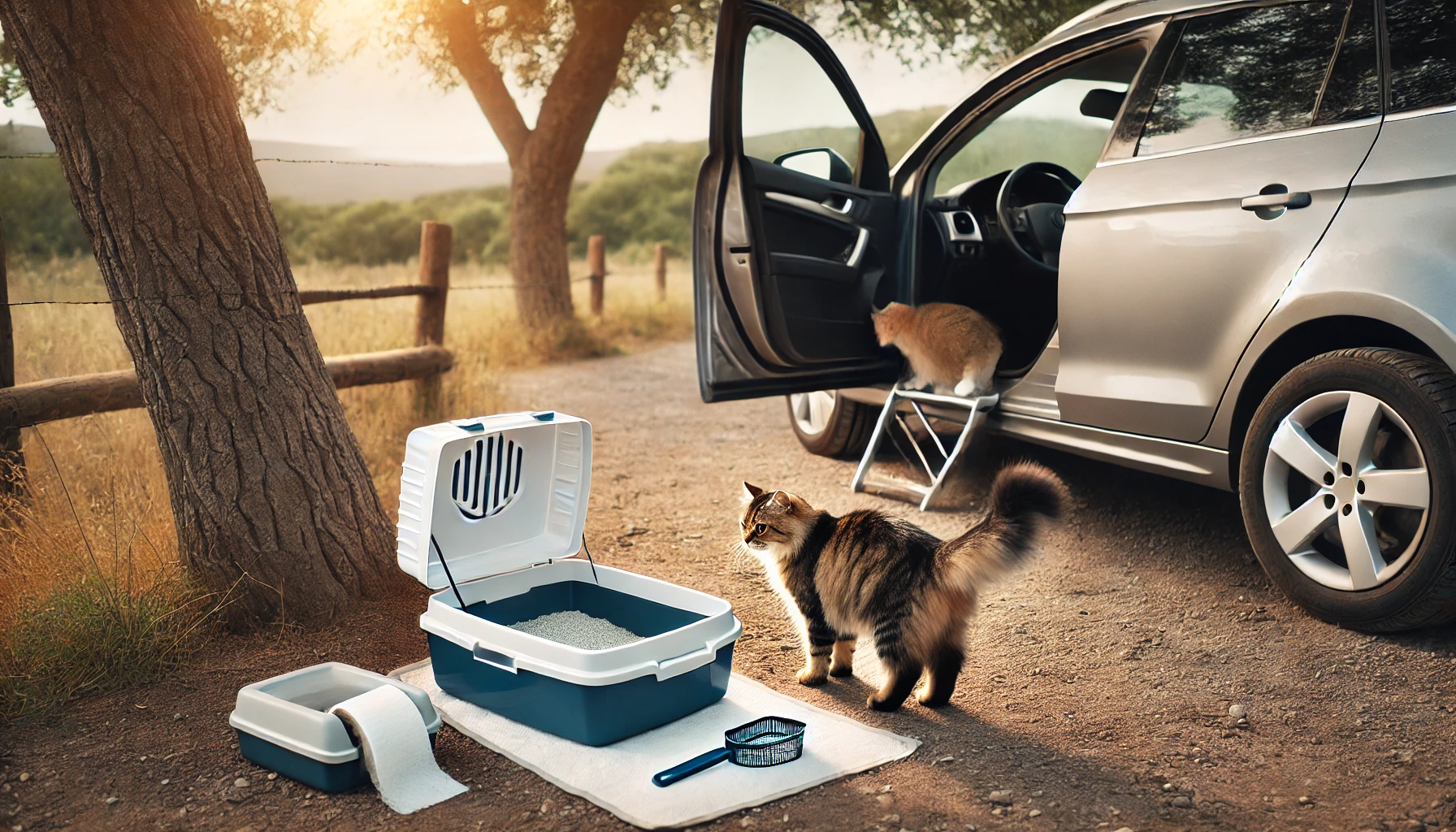
Rest Stops and Litter Breaks: Timing It Right
Timing your stops for litter box breaks on road trips is essential to prevent accidents and keep your cat comfortable.
Here’s how to manage it effectively:
- Plan Stops Every Few Hours: Depending on your cat’s habits, schedule breaks every 2-4 hours. This gives your cat the chance to stretch, use the litter box, and relieve themselves in a relaxed setting.
- Use Familiar Litter: Bring along your cat’s usual litter and use it during the trip. Cats are creatures of habit, and using their familiar litter will help them feel more at ease during rest stops.
- Set Up in a Quiet Area: Find a quiet spot away from traffic or noise when setting up the litter box at a rest stop. This will make your cat feel secure and reduce the chance of them refusing to use the box.
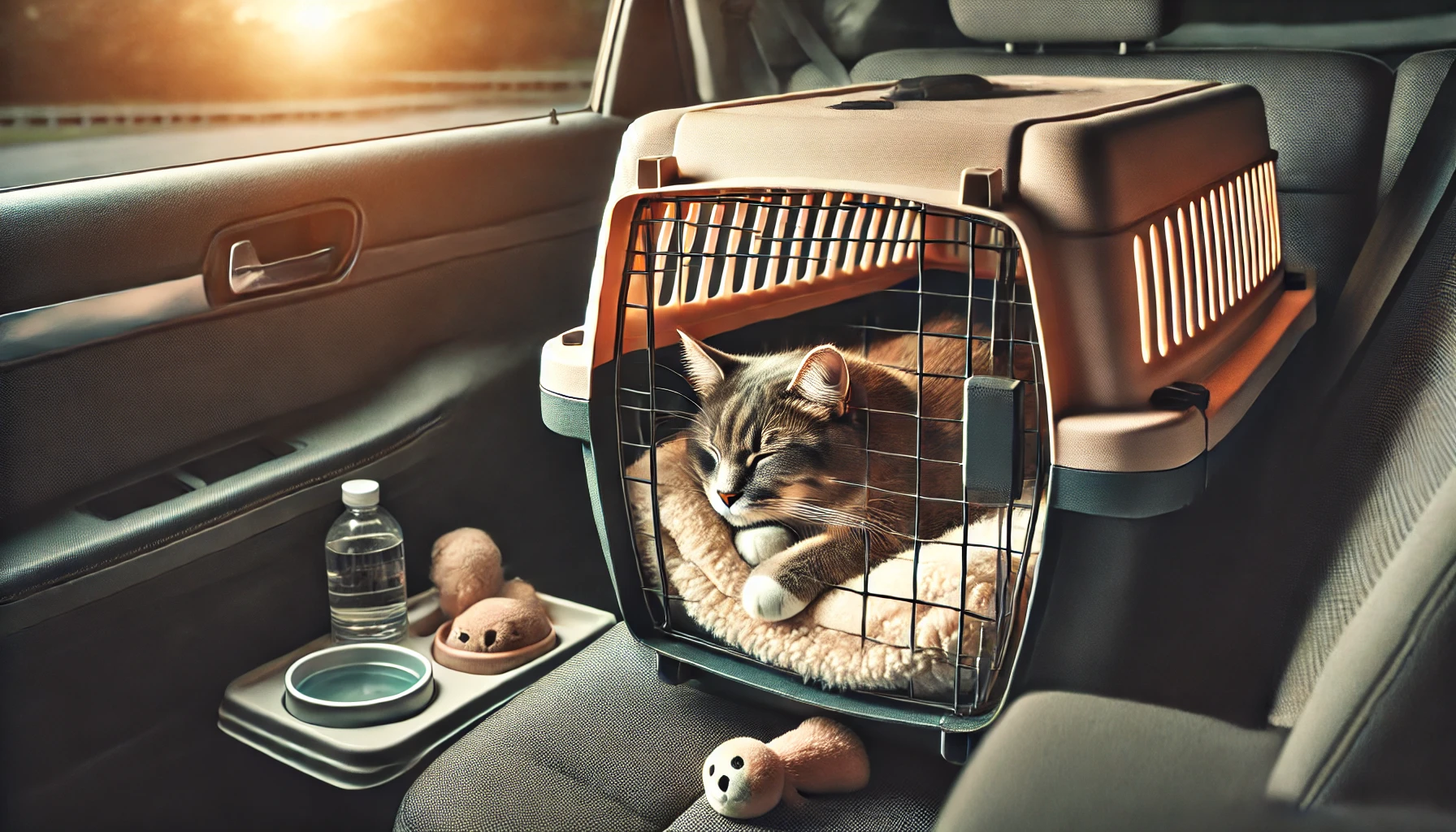
Reducing Stress for Cats During Long-Distance Travel
Long-distance travel can be stressful for cats, but there are several ways to reduce anxiety and make the journey smoother:
- Create a Familiar Environment: Bring your cat’s blanket, toys, or bedding for comfort during the trip. Familiar scents will help lower their stress levels.
- Use Calming Products: Pheromone sprays like Feliway can be sprayed in the carrier or around the travel litter box to create a soothing atmosphere. These products help reduce anxiety and promote a sense of security.
- Frequent Comfort Breaks: Give your cat regular breaks to use the litter box, drink water, and relax in a calm environment. This will help them stay comfortable and reduce the risk of accidents.
Long-distance travel with a cat requires careful planning. Frequent breaks, familiar litter, and a comfortable setup will help ensure your cat remains calm and comfortable throughout the journey.
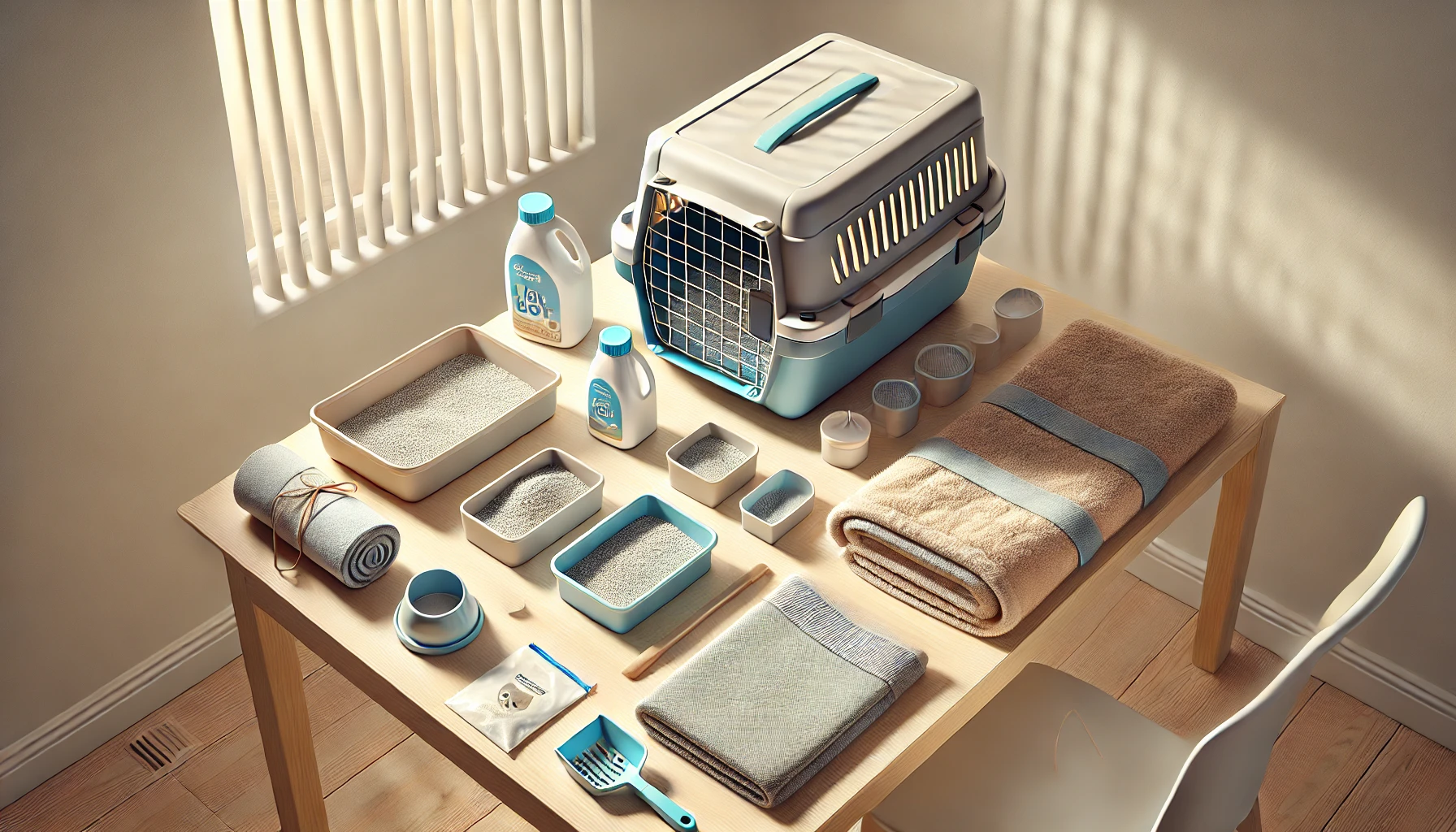
Summing Up: Managing Travel Litter Box Needs for Cats
One of the most exciting things you can do is travel with your cat, but it’s crucial to manage your cat’s travel litter box needs throughout the journey to ensure their comfort and health.
By preparing ahead of time with the right tools and strategies, you can make your trip with your kitty more enjoyable and stress-free.
This article has covered the basic aspects of managing travel litter box needs, including choosing the right box, maintaining hygiene, and addressing common issues.
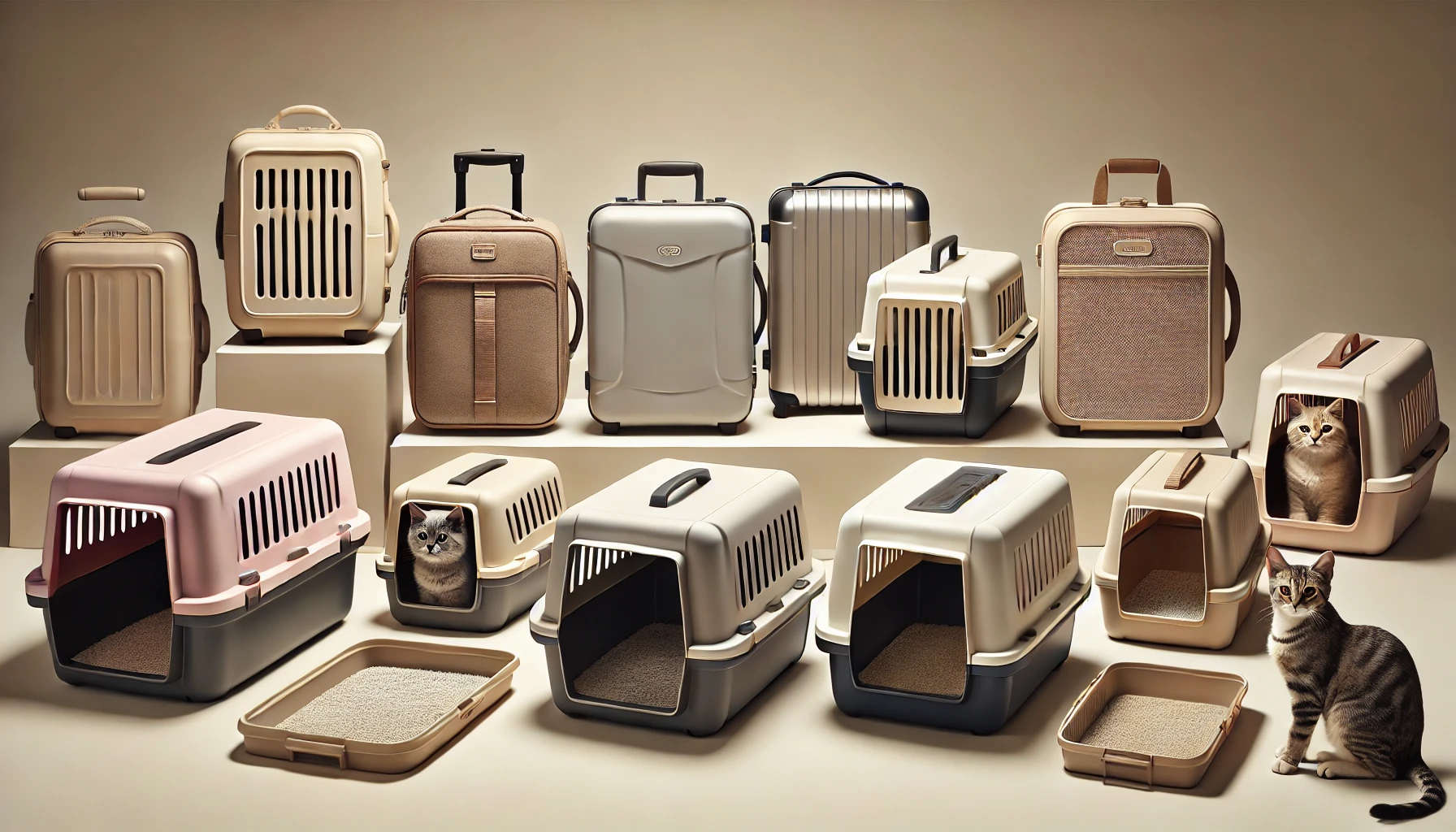
Choosing the Best Travel Litter Box
First and foremost, comfortable travel with a cat requires selecting the right travel litter box.
Whether you opt for a foldable, disposable, or collapsible box, it should be appropriately sized for your cat and easy to clean during travel.
Taking your cat’s preferences into consideration will help reduce their anxiety and make them more likely to use the box without any issues.
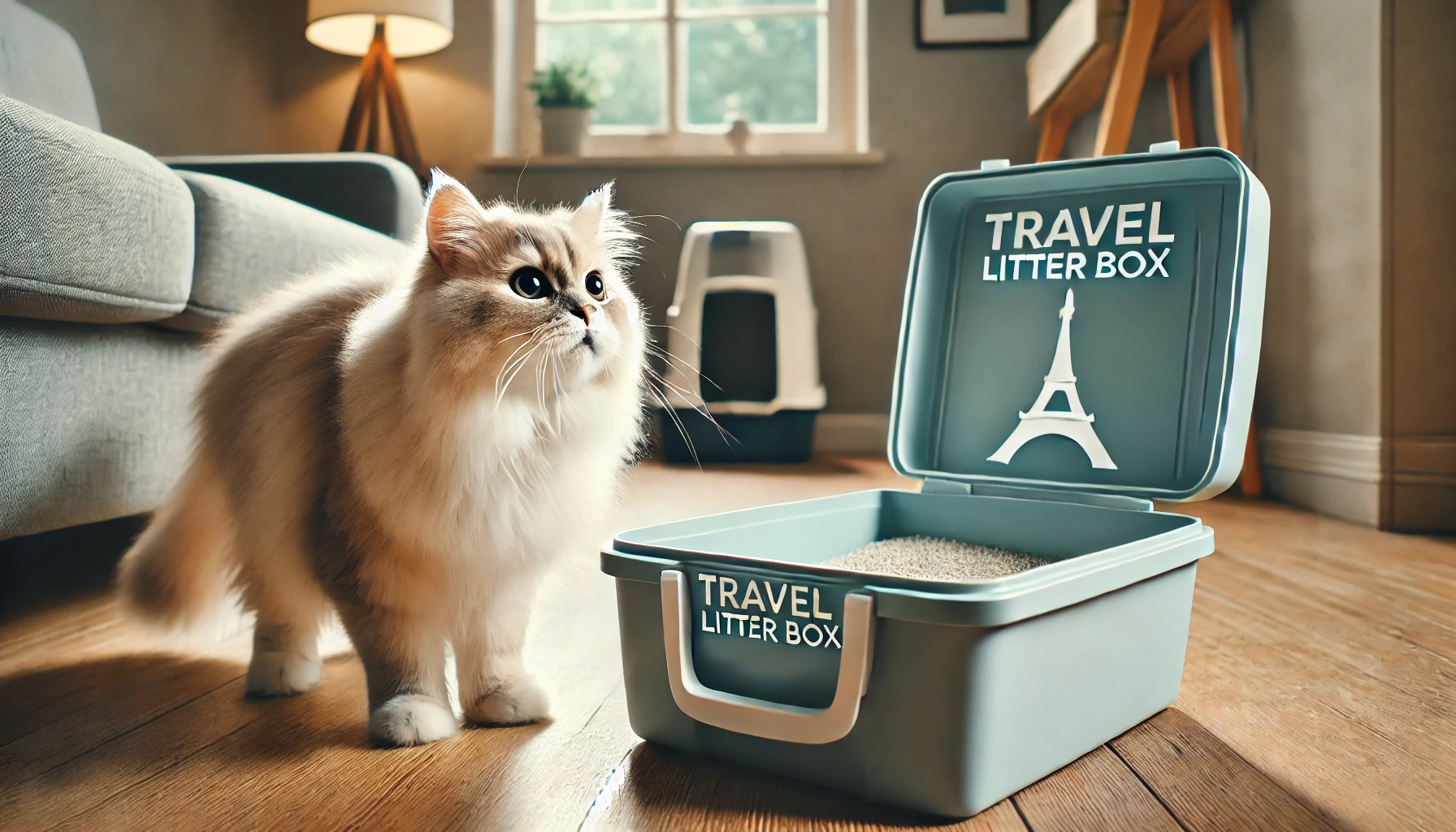
Preparing Your Cat for the Travel Litter Box
Introducing your cat to the travel litter box before your trip makes a significant difference.
Gradual exposure at home will help reduce stress by making your cat comfortable using the box in a new environment.
Using the same type of litter they are familiar with will also ease the transition.
With proper preparation and familiar items, you’ll be setting the stage for a stress-free journey.
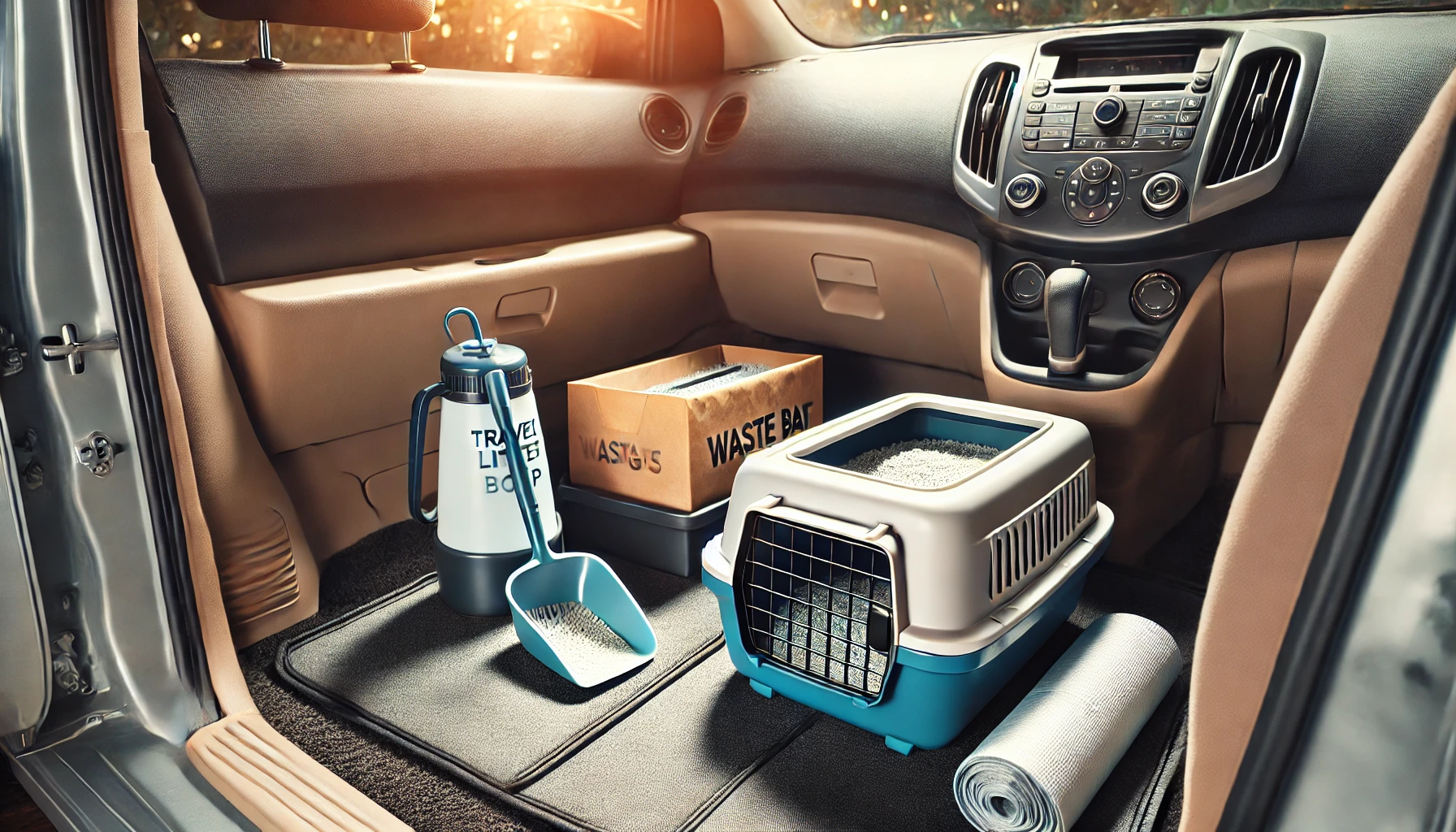
Keeping the Travel Litter Box Clean on the Road
Maintaining the cleanliness of your cat’s travel litter box is essential for preventing anxiety on the road.
Regular cleaning, proper waste disposal, and keeping the area odor-free will prevent your cat from avoiding the box due to unpleasant smells.
Essential items like a litter scoop, disposable liners, and odor-neutralizing sprays are necessary for maintaining hygiene, whether on short or long-distance trips.
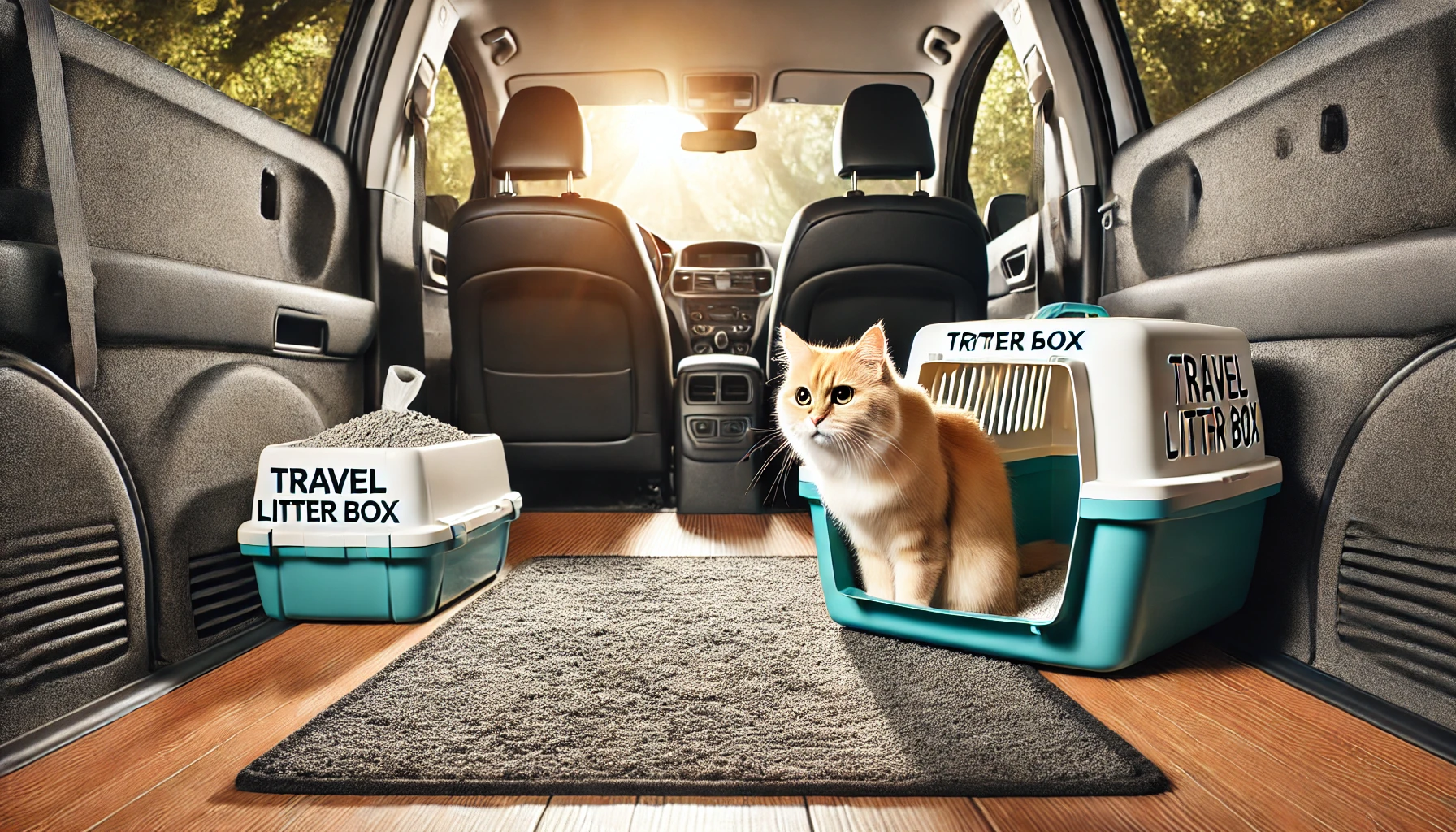
Addressing Common Travel Litter Box Problems
Some common travel issues include your cat refusing to use the litter box or having accidents.
Staying calm, being prepared for accidents, and using familiar litter can help manage these problems.
Setting up the litter box in a quiet, safe area and rewarding your cat for using it can reduce issues.
Anxiety can also be addressed with pheromone sprays and comfort items, making the journey smoother for your cat.
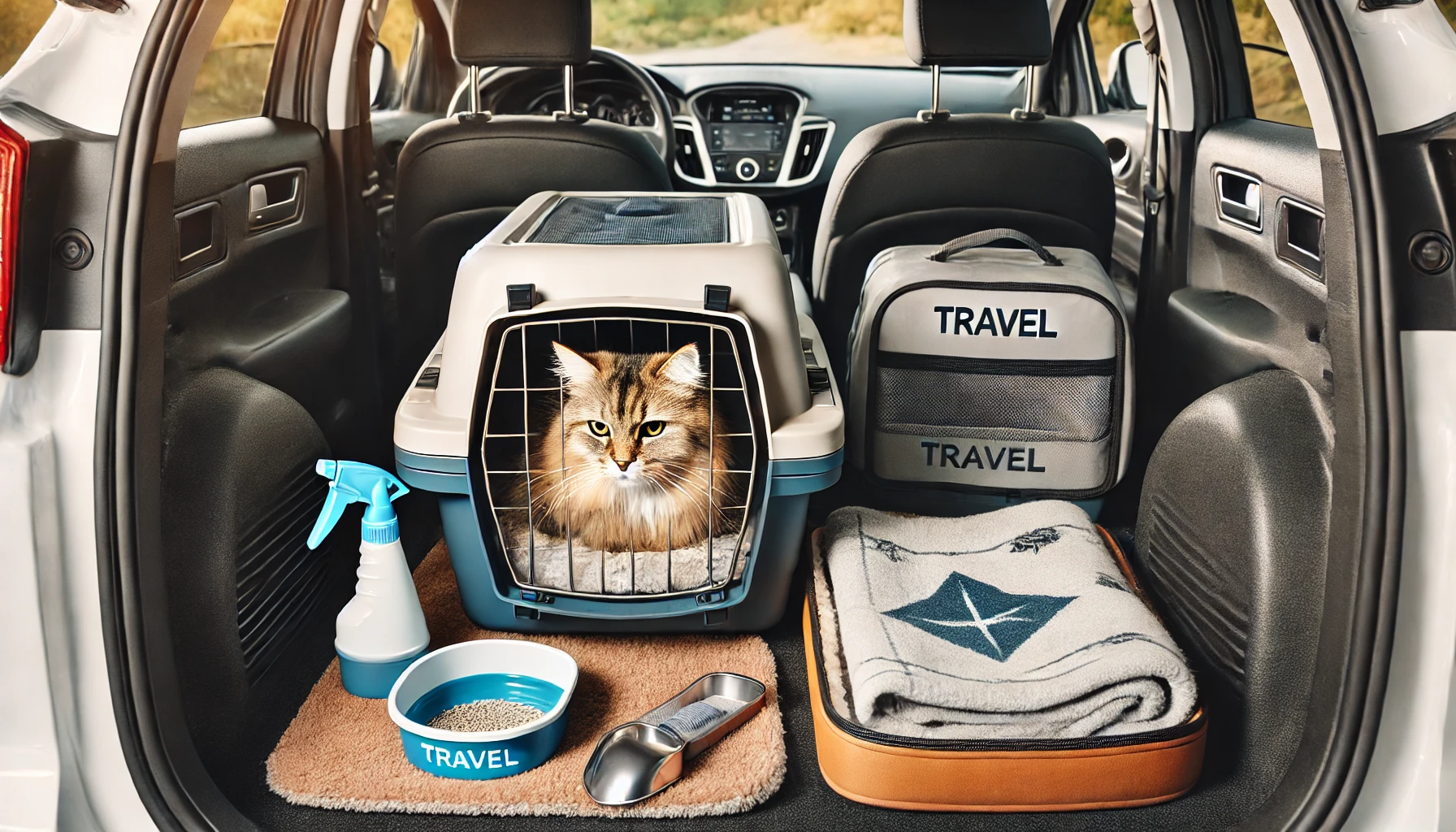
Long-Distance Travel Tips
Long-distance travel poses additional challenges, but careful planning can minimize them.
Ensuring your cat has access to the travel litter box during road, air, or rail trips, along with providing frequent breaks, helps keep them comfortable.
A well-ventilated travel space, along with familiar toys or blankets, can ease your cat’s anxiety and ensure a smoother experience.
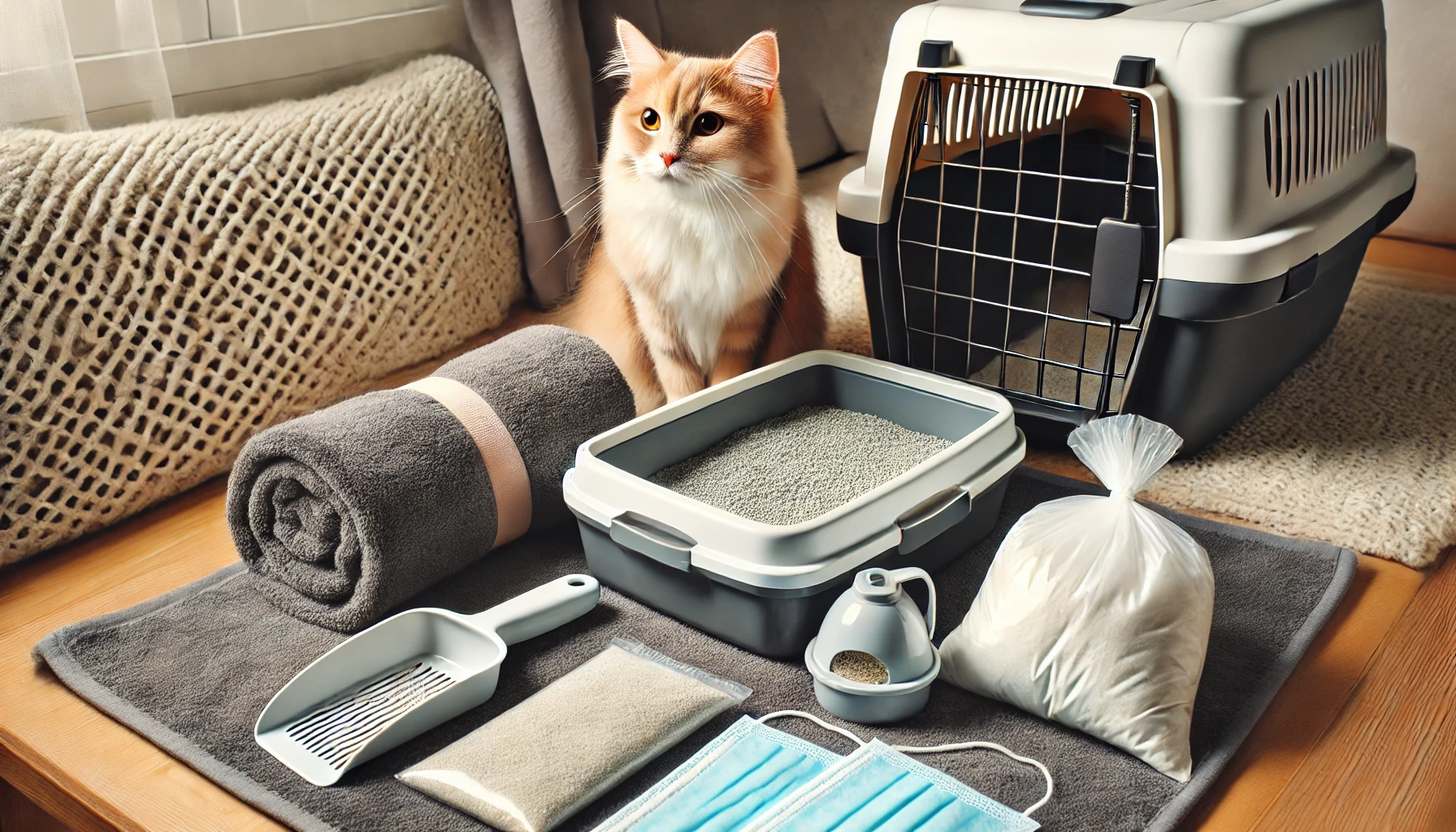
Final Thoughts on Managing Travel Litter Box Needs
Ultimately, managing travel litter box needs for your cat comes down to preparation, maintaining a routine, and focusing on your cat’s comfort.
Understanding your cat’s habits and providing the right environment—whether on a short trip or an extended journey—will lead to success.
By following these guidelines and taking proactive steps, you can ensure both you and your cat have a stress-free travel experience.
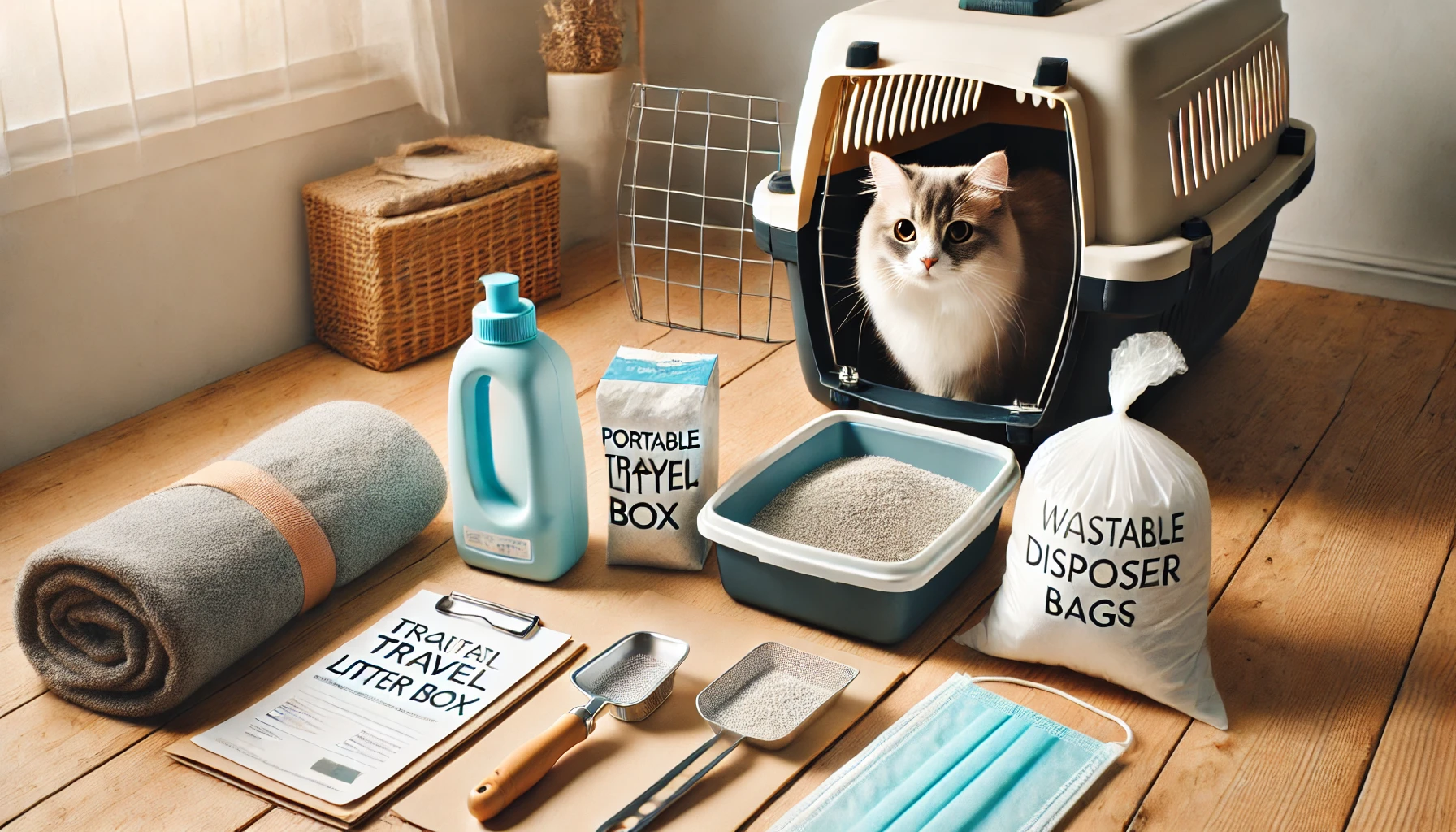
FAQs About Managing Travel Litter Box Needs for Cats
Traveling with a cat comes with many challenges, especially when managing their litter box needs.
Below are answers to some of the most common questions cat owners have when preparing to travel with their feline companions.
What type of travel litter box will work best for my cat?
The best travel litter box depends on your cat’s size and preferences.
Foldable, collapsible, or disposable options are popular because they are easy to transport and clean, ensuring comfort for your cat during the journey.
How do I acclimate my cat to the travel litter box?
Before your trip, acclimate your cat to the travel litter box at home.
Place the box next to their usual litter box, using the same litter.
This helps them get used to the new setup before traveling.
How often on a trip should I clean the travel litter box?
Clean the travel litter box at least once a day or at each stop during a long drive.
Keeping it fresh and odor-free ensures that your cat will be comfortable using the box whenever needed.
What do I do if my cat refuses to use the travel litter box?
Stick to the same litter your cat is familiar with, and place the box in a quiet, private spot.
You can also try using calming sprays or gradually introducing the box before the trip to reduce stress.
How can I manage my cat's litter needs during a long flight?
Use a small portable litter pan or disposable litter box during layovers or rest stops.
If access is limited, line the carrier with absorbent pads to handle any accidents that may occur during the flight.
Can I travel with any type of litter?
It’s best to stick to the litter your cat is already used to in order to avoid stress.
Clumping, silica gel, or biodegradable litter are good options, as they control odor and are easy to manage on the go.
How often should I stop on a road trip with my cat?
Plan to stop every 2-4 hours to allow your cat to use the litter box and stretch.
Frequent breaks help reduce stress and prevent accidents during long road trips.
What should I pack to maintain litter box hygiene on the road?
Pack extra litter, a litter scoop, disposable liners, waste bags, and odor-neutralizing sprays.
These items will help you maintain cleanliness and ensure your cat’s comfort throughout the trip.
How can I reduce my cat's anxiety during long-distance travel?
Use calming aids like pheromone sprays and bring along your cat’s favorite items, such as blankets or toys.
These familiar items can help create a comfortable environment for your cat during longer journeys.

